LG QNED91T is the only MiniLED-backlit TV from LG for 2024 that catches the eye with its innovative use of a VA panel. This is certainly a departure from the established standards of the Korean manufacturer with its top-tier LCD TVs, which typically used an IPS/ADS panel. But the result is positive – the panel combined with local dimming offers really good contrast. Blacks are deep and should satisfy most users. LG 65QNED91T6A is a very bright TV, so placing it in slightly challenging lighting conditions will not pose a challenge for it. In terms of motion fluidity, the QNED91T shows top class. The TruMotion feature works great, allowing for image adjustment according to personal preferences – from a classic, cinematic look to a more fluid effect. And the 120Hz panel makes it ideal for sports or gaming. For the latter, LG has prepared something special – four full HDMI 2.1 ports with a bandwidth of 48 Gbps, allowing for features like VRR and ALLM (and more). This, combined with low input lag, makes this equipment an excellent choice for gaming on a console or PC. Daily use of QNED91T is pure pleasure, mainly thanks to the WebOS system. The interface is intuitive, there's no lack of applications, and the Magic Remote included in the package significantly simplifies navigation through the menu. Operation is fast, and using the TV is comfortable thanks to the voice assistant. Unfortunately, the TV also has its weaknesses. Despite the advantages of the VA panel in terms of high contrast, the algorithms responsible for local dimming of the miniLED zones do not perform very well. In HDR content, there are situations where the picture is either too bright or excessively dark, which is particularly problematic in scenes requiring precision. Additionally - in practice, the differences between standard HDR10 and Dolby Vision are nearly invisible. This is a significant disappointment, especially in this class of TV. Nonetheless, the LG QNED91T is an interesting choice for those who need a TV with high brightness, considerable gaming capabilities, and appreciate the convenience of the WebOS system. If the priority is picture quality in HDR content, such as Netflix, Prime Video, or Max, we recommend considering alternative models, such as OLED B4 from the 2024 line, which is available for a similar price.
- Matching (Score)
- Our verdict
- TV appearance
- Where to buy
- Contrast and black detail
- HDR effect quality
- Factory color reproduction
- Color reproduction after calibration
- Smoothness of tonal transitions
- Image scaling and smoothness of tonal transitions
- Blur and motion smoothness
- Console compatibility and gaming features
- Input lag
- Compatibility with PC
- Viewing angles
- TV efficiency during daytime
- Details about the matrix
- TV features
- Apps
- Playing files from USB
- Sound
LG QNED91T6A vs SAMSUNG QN80F
Direct compare
QNED91T / QNED90T
QN80F

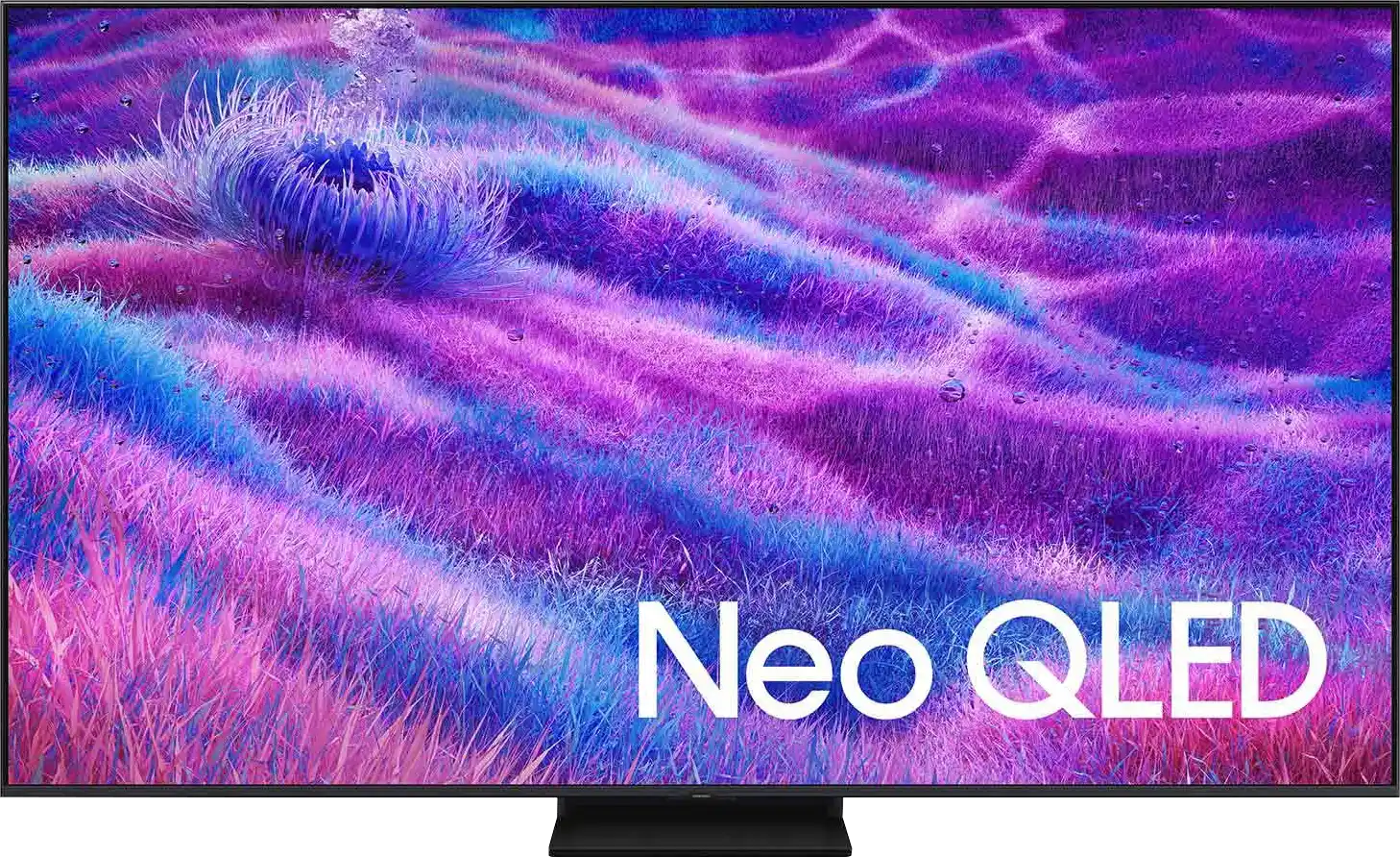
Panel type: LCD VA
Resolution: 3840x2160
System: WebOS
Model year: 2024
Complete the survey to find out the result

Panel type: LCD VA
Resolution: 3840x2160
System: Tizen
Model year: 2025
Complete the survey to find out the result

Overall rating
7.2
7.3
Movies and series in UHD quality
6.5
6.9
Classic TV, YouTube
6.7
6.8
Sports broadcasts (TV and apps)
6.8
6.7
Gaming on console
8.5
8.5
TV as a computer monitor
7.5
8.8
Watching in bright light
6.1
6.6
Utility functions
9.0
7.7
Apps
8.3
8.7
Sound quality
6.9
6.7
Complete the survey to find out what fits your preferences
Advantages
Good contrast - VA panel
Suitable for gamers: HDMI 2.1, low input lag, 120Hz
Decent brightness - works well for watching during the day
Great operating system WebOS - Magic Remote, voice features
Recording from built-in tuners
Great black levels and contrast - VA panel combined with MINI-LED backlighting.
Excellent brightness - up to 1000 nits in HDR
Fast and responsive panel - 144 Hz
Robust support for gamers - 4xHDMI 2.1, VRR, ALLM, GameBar, Game Motion Plus
Very good usability in daylight
Advanced Tizen operating system
Easy to use
PiP function
Disadvantages
Poor management of dimming zones
Lack of HDR adaptation - no difference visible between HDR10 and Dolby Vision
Poor viewing angles
No DTS format support – a limitation when connecting a home theatre system
No USB recording function
Relatively few dimming zones
Issues with the HGiG function (for gamers) – the update removed this option*
Our verdict
QN80F is the first in the history of Samsung's "eighty range" to feature Mini LED backlighting. And it does it really well. Although the number of dimming zones isn't staggering, the black levels are solid, and in combination with high brightness, it allows for a very decent picture in HDR content. Additionally, there's a 144 Hz panel that provides excellent motion fluidity, and the gaming features – VRR, ALLM, Game Motion Plus – make the QN80F an option truly designed for those gaming on consoles or PCs. The television operates quickly and responsively, and the Tizen system runs like lightning – whether you’re searching for apps or switching sources. Is there anything to nitpick? Of course, as always – there are shortcomings in the system (like USB recording), DTS support is absent, and Mini LED comes with its own limitations. But the QN80F is a fantastic everyday television – versatile, refined, and... with great price potential. Looking at the history of this series, we can expect that this "eighty" will still shake things up once it hits the first reasonable promotions. And then it could be virtually unbeatable at its price – especially if Samsung fixes the minor teething issues.
TV appearance





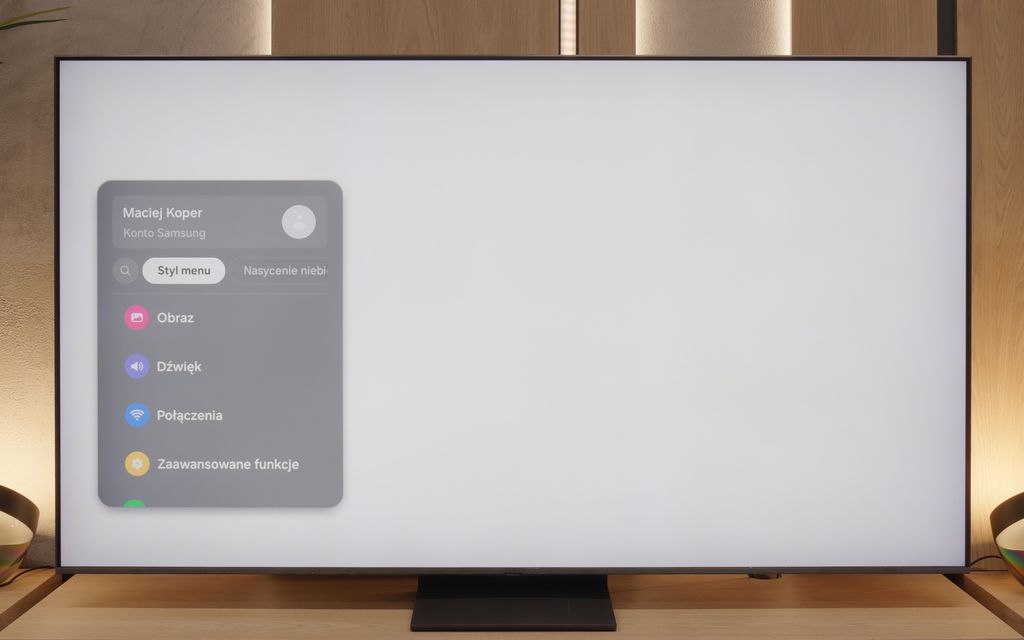
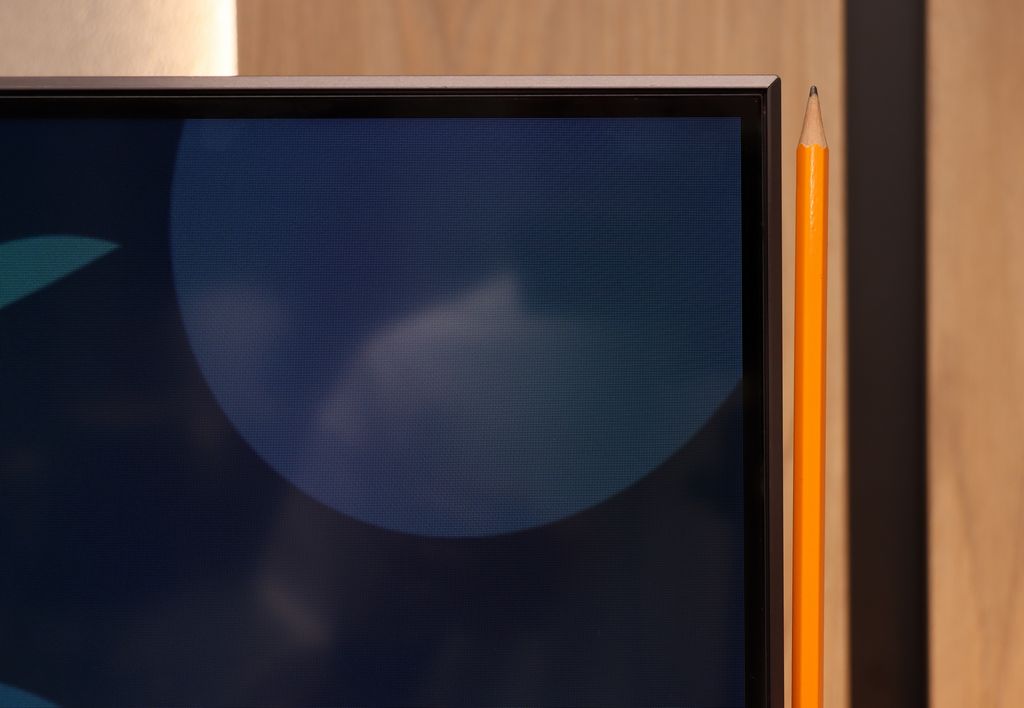
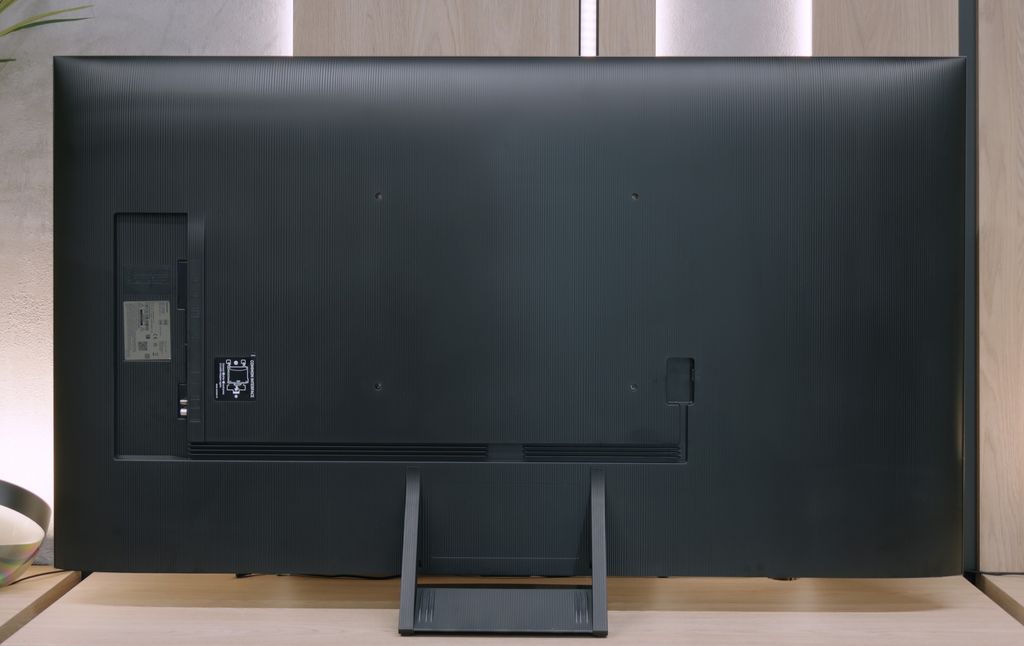

Contrast and black detail
6.8/10
6.8/10
Local dimming function: Yes, number of zones: 160 (16 x 10)
Local dimming function: Yes, number of zones: 88 (8 x 11)
Contrast:

Result
126,250:1

Result
20,900:1

Result
19,200:1

Result
4,900:1

Result
4,550:1

Result
34,100:1

Result
8,200:1

Result
32,500:1

Result
4,550:1

Result
3,800:1
Halo effect and black detail visibility:

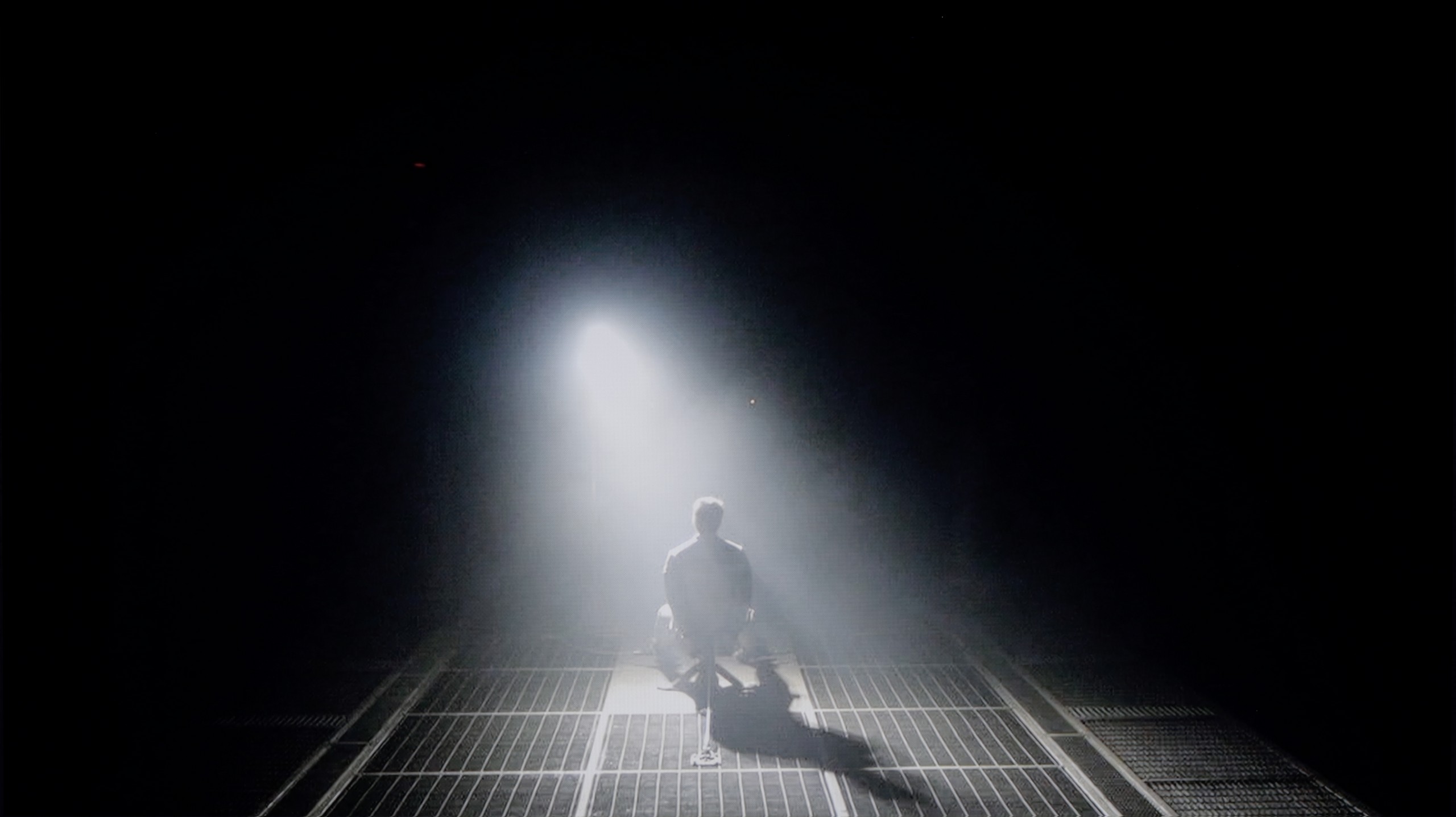
QNED91T is a television with MiniLED backlighting, and in the tested size of 65", we counted 160 local dimming zones. The unit we tested, with a "1" at the end, is equipped with a VA panel, which offers significantly better contrast than IPS panels, which - note - can be found in the model LG QNED90T. Therefore, it's wise to be cautious when choosing a version to avoid disappointment regarding contrast. The model QNED90T is rather hard to acquire in Poland, but distribution can vary. Returning to our contrast tests, it performed really well in less demanding scenes. For example, in one of the scenes from the movie "Oblivion," we observed perfect separation of lights - it looked impressive. However, not everything is so straightforward. In a scene from "Sicario 2," we noticed that the screen was noticeably darker, deviating significantly from the reference image appearance. The television effectively eliminates the halo effect (i.e., the glow around objects), but this comes at the cost of brightness - and quite a considerable one at that. Despite these compromises, the contrast of LG 65QNED91T6A is genuinely solid. Of course, as is the case with MiniLED televisions, some limitations must be taken into account, but the overall impression is very positive.
QN80F is a representative of the Neo QLED series, meaning it is a television with Mini LED backlighting. Unlike its cheaper cousin, the QN70F model, the diodes here are placed directly behind the panel (instead of at the edges), which gives a solid advantage from the start when it comes to contrast control. In the 65-inch variant we tested, we counted 88 dimming zones – a result that may not be very impressive, but as it turned out, sufficient to achieve quite decent results.
In tests based on scenes from films such as Oblivion or The Meg, the QN80F performed well – blacks were deep, and the overall image consistency was eye-catching. However, in more demanding moments (e.g., scenes with a large number of bright details on a dark background), a halo effect appeared. This is where the limitation of the number of zones comes into play – bright elements could bleed around, and some details in dark areas became less visible. In one scene with a helicopter (The Meg), we even noticed slight brightness flickering, as if the television was trying its best to maintain visibility of the details at the expense of black depth.
However, these are not issues exclusive to this model – the halo effect or contrast drops in very complex scenes are something that most Mini LED televisions struggle with, even the more expensive ones. In its class, the QN80F still performs positively and offers noticeably better contrast than the QN70F model with edge lighting. For most users, this will be a level more than sufficient – although not perfect.
HDR effect quality
5/10
5.8/10
Luminance measurements in HDR:

Result
1069 nit

Result
180 nit

Result
577 nit

Result
96 nit

Result
674 nit

Result
799 nit

Result
533 nit

Result
717 nit

Result
245 nit

Result
656 nit
Scene from the movie “Pan” (about 2800 nits)


Scene from the movie “Billy Lynn” (about 1100 nits)

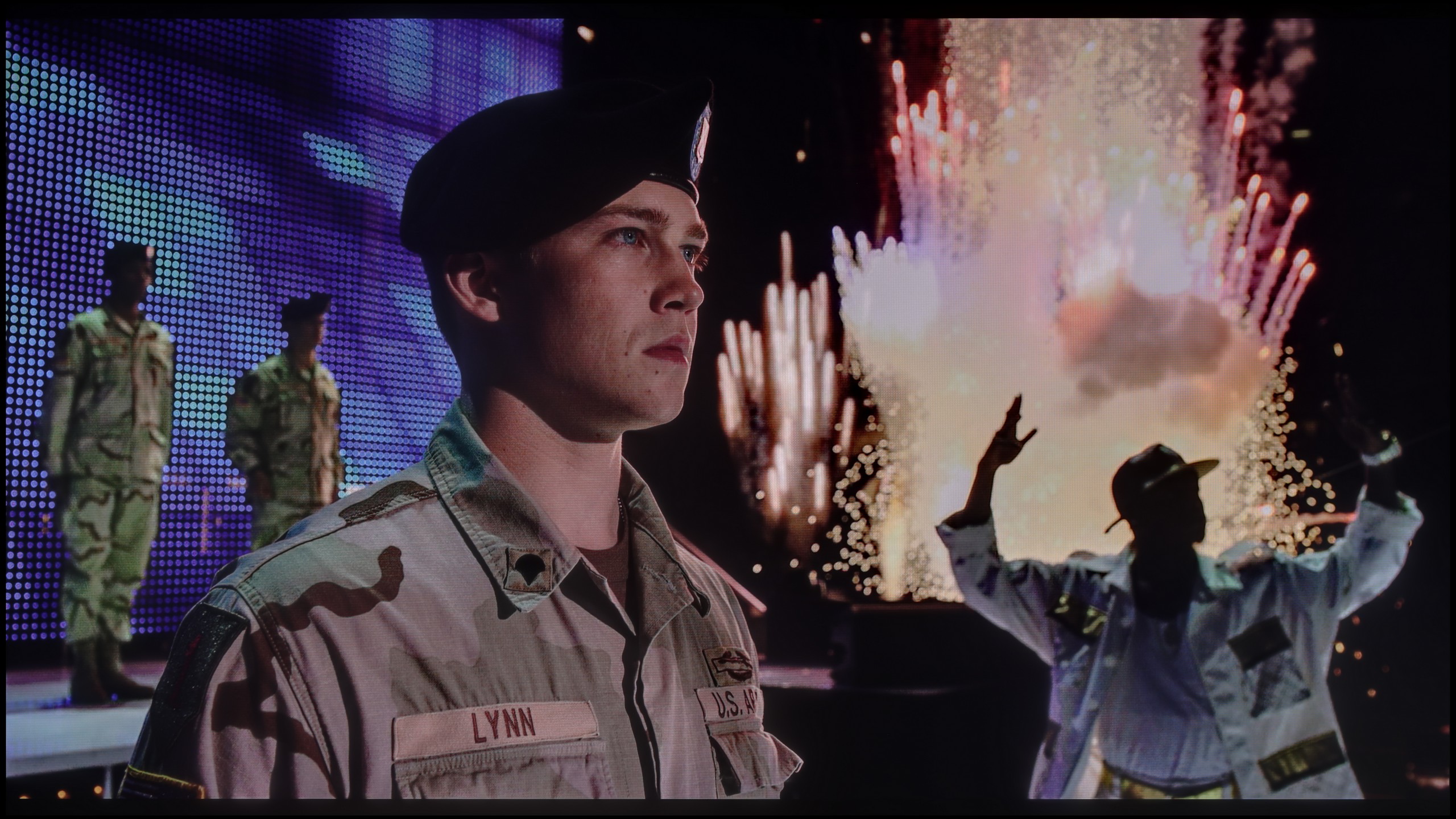
Static HDR10


Dynamic: Dolby Vision
Dynamic: HDR10+


HDR luminance chart:
SAMSUNG QN80F
Luminancja HDR
Luminance of RGB colors
LG QNED91T6A
Luminancja HDR
Luminance of RGB colors
As befits a MiniLED television, LG QNED91T easily exceeds the magical barrier of 1000 nits on the luminance chart. In scenes where light played a key role, the effect was truly commendable. For instance, 1000 nits in the first scene of "Life of Pi" is a really impressive value, and the achieved 600 nits in the third and fifth scenes allowed for a true sense of HDR magic. However, problems arise with very small light elements on the screen, such as the moon, street lamps, or lights. Values around 100 nits - to put it bluntly - are disappointing, as these elements are so dark they are barely visible. The television deserves praise for covering 96% of the DCI-P3 colour gamut and 75% of BT.2020. LG QNED91T leaves us with very mixed feelings, mainly due to the very aggressive dimming algorithms which, while effectively eliminating halo effect, do impact the brightness of smaller elements.
QN80F is quite a bright screen – in synthetic tests, it reached nearly 1000 nits, which allows for reasonable expectations of HDR content. And indeed, in many scenes, the TV can truly shine. Sequences with a lot of light – like shots from the movie Life of Pi or wide, bright surfaces in The Meg – look impressive. Brightness stays around 700 nits, which provides a solid effect, enough to feel the true "HDR magic." Unfortunately, not every scene looks this good. In content with small, bright details on a dark background, like in Sicario 2, the TV can struggle – it can significantly dim individual elements, sometimes to the point where they disappear from the image. This is a result of the limited number of dimming zones, forcing the device into compromises: either stick to inky blacks or sacrifice some detail. QN80F usually chooses the former. As a consolation, it offers quite decent coverage of a wide color palette – DCI-P3 at 93%. It's not the highest score on the market, but it's more than enough for most content on streaming platforms.
Factory color reproduction
6/10
6/10


Factory Mode
After calibration


Factory Mode
After calibration
All our tests are conducted in the best picture mode on each television. In this case, as usual, it’s the Filmmaker mode. The name of the mode suggests ideal colour reproduction; however, there were noticeable deviations from the correct image. Our unit, in terms of white balance, exhibited a significant drop in blue hues - both in SDR and 4K HDR materials - resulting in a noticeable yellowing of the image, evident in the comparison scenes from a movie with Tom Cruise. As we described earlier, QNED91T has a tendency to brighten the screen. This is confirmed by the gamma, which is quite significantly lower than the reference value of 2.4. Meanwhile, the EOTF curve, which is responsible for brightness in 4K content, showed some issues with the television’s ability to dim the image in the darkest areas, which we could observe in the paragraph describing the quality of the HDR effect. Although the Filmmaker mode is a pretty good "out of the box" mode, it still requires some adjustments.
We always test TVs in the best available factory mode – for the Samsung QN80F, this is the Filmmaker mode, and indeed, it provides the settings closest to the creators' intentions. However, this doesn’t mean everything looks perfect. In SDR content, the biggest issue was an unbalanced white balance – slight deficiencies in green and a noticeable excess of red led to noticeable colour errors, and one could say the screen had a pinkish hue. This was clearly visible in the colour checker test, where colours “escaped” outside their target fields – to such an extent that a sensitive viewer's eye could catch it even without the help of a meter.
In HDR content, the white balance was much better, but another issue arose – brightness management. The EOTF curve caused an overly bright image most of the time, which affected the perception of contrast and made the screen slightly “flicker” during dynamic changes in light. We’ve already discussed this in the paragraphs about black levels and HDR. Fortunately, Samsung offers users plenty of options. The QN80F features a rich set of calibration options, including a 20-point white balance – which is why we decided to check what this TV is really capable of after a proper calibration.
Color reproduction after calibration
7.8/10
8.3/10

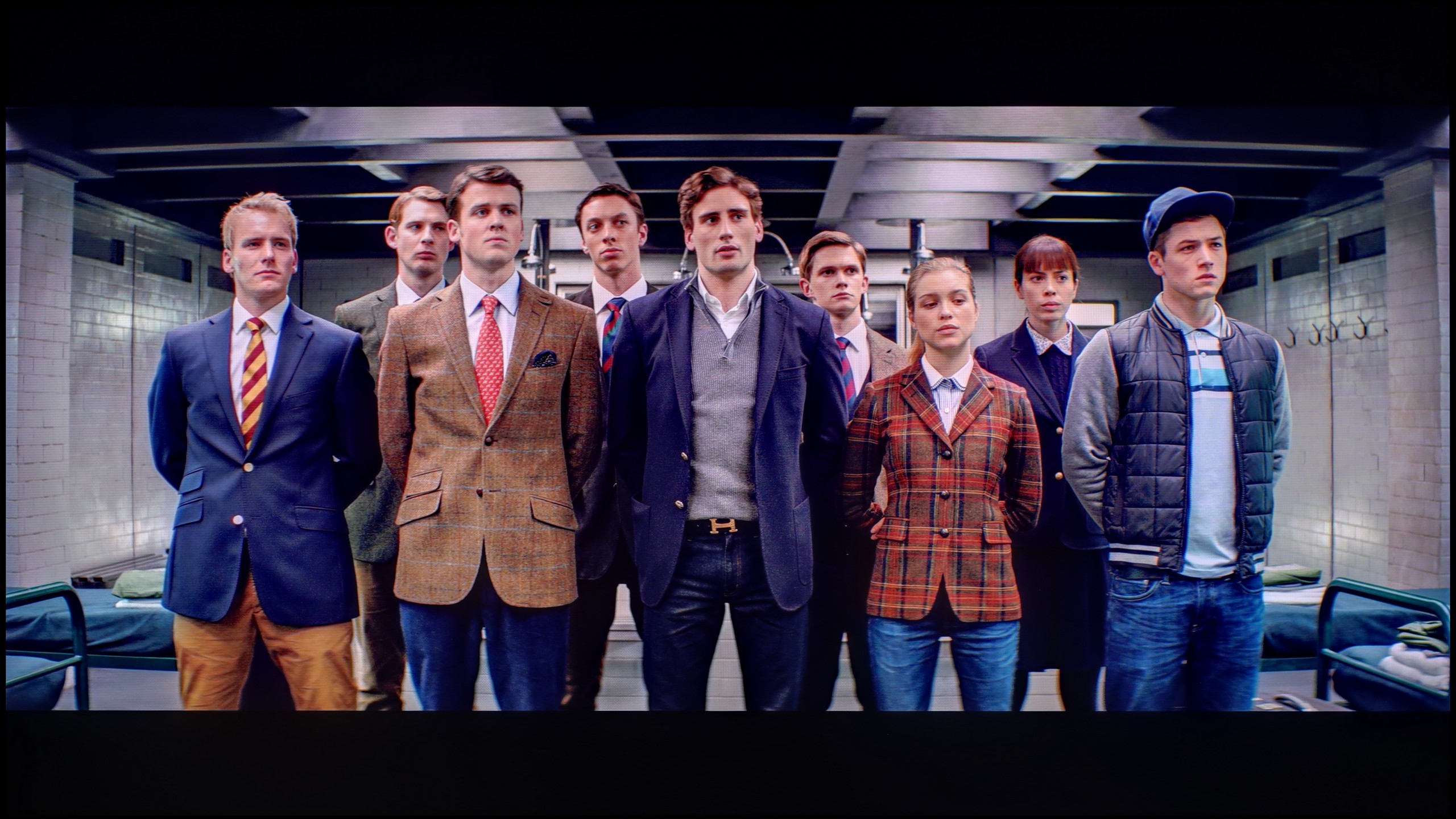


LG offers advanced calibration tools in its televisions such as 65QNED91T6A, which we took advantage of. When it comes to white balance, we managed to significantly correct it in SDR content. The picture mode in 4K HDR quality posed greater challenges, which, while still not perfect, looks significantly better than before calibration. The errors on the Color Checker palette and the colour palette are much smaller than in the factory settings. In terms of brightness characteristics, gamma for HD content is practically perfect, with a small exception at the end of the graph. However, the biggest issues the television faced were with brightness in 4K HDR content. Analyzing the EOTF characteristics in films, we noticed that the television manipulates brightness quite a bit, which we could observe in previous tests. Brightness is significantly boosted compared to the graph in the static test, and the television brightens certain scenes to the extent that some smaller details lose definition. Unfortunately, this is caused by an average backlight zone management algorithm in this model. Nevertheless, the calibration yields quite good results, especially regarding accurate colour reproduction.
After conducting a thorough calibration, it was possible to bring most image parameters to a really good level. The white balance in both SDR and HDR presents itself almost perfectly – the image is natural, neutral, and free from the previously noticeable redness. Colours have gained depth, and the overall visual experience has become more pleasant and cohesive. It was also possible to partially manage brightness, which in the factory version could cause issues. The EOTF chart shows that the television performs much better with brightness after calibration – there is no longer excessive dimming of certain elements. In films, it can still be noticed that the QN80F has a tendency to slightly brighten the smallest bright details – this is already a consequence of the device's construction and the limited number of dimming zones. In short: not everything can be overcome, but what was possible has been improved. After calibration, the QN80F makes a really good impression, looking simply more mature and professional.
Smoothness of tonal transitions
8.5/10
9/10

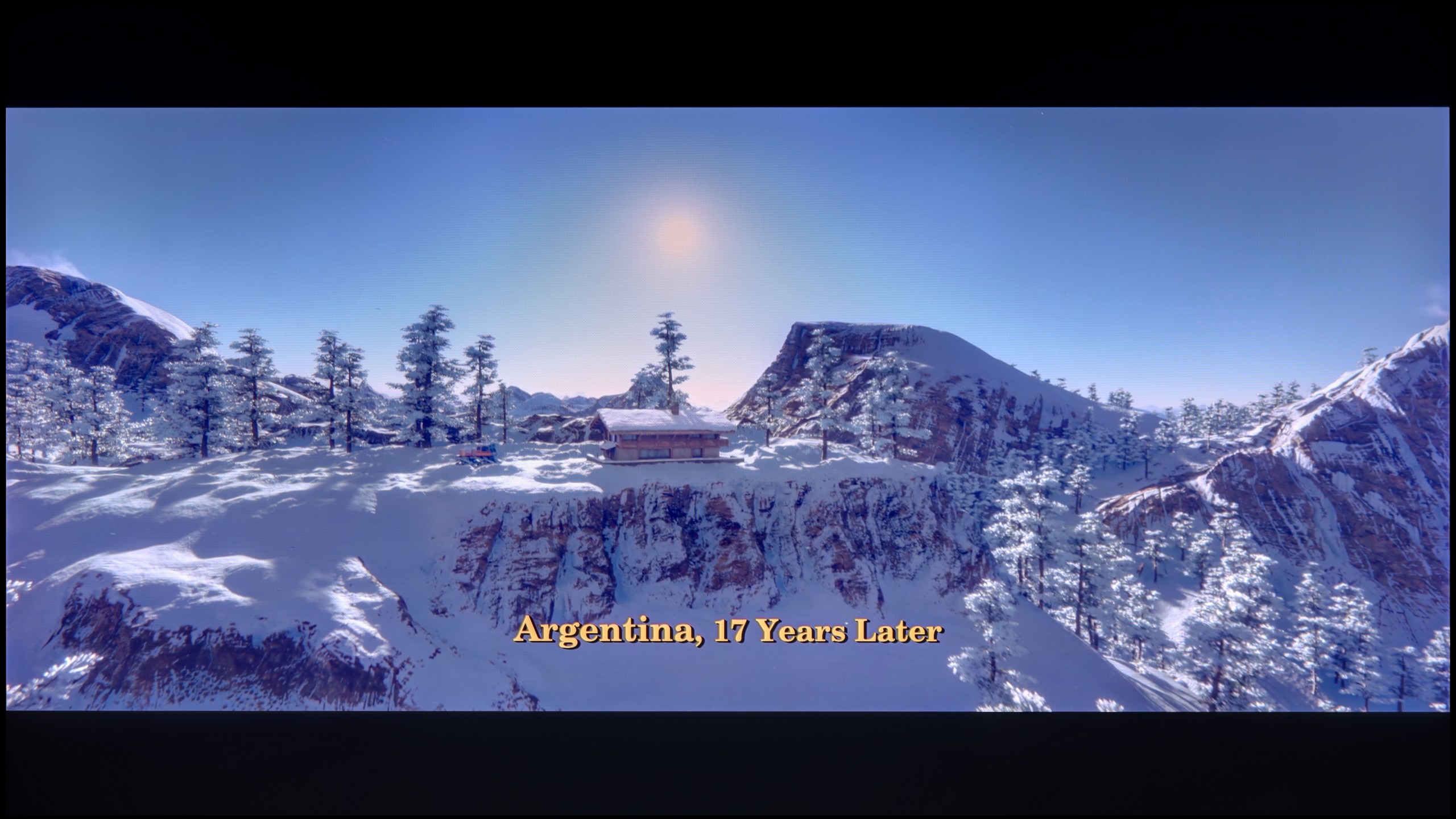



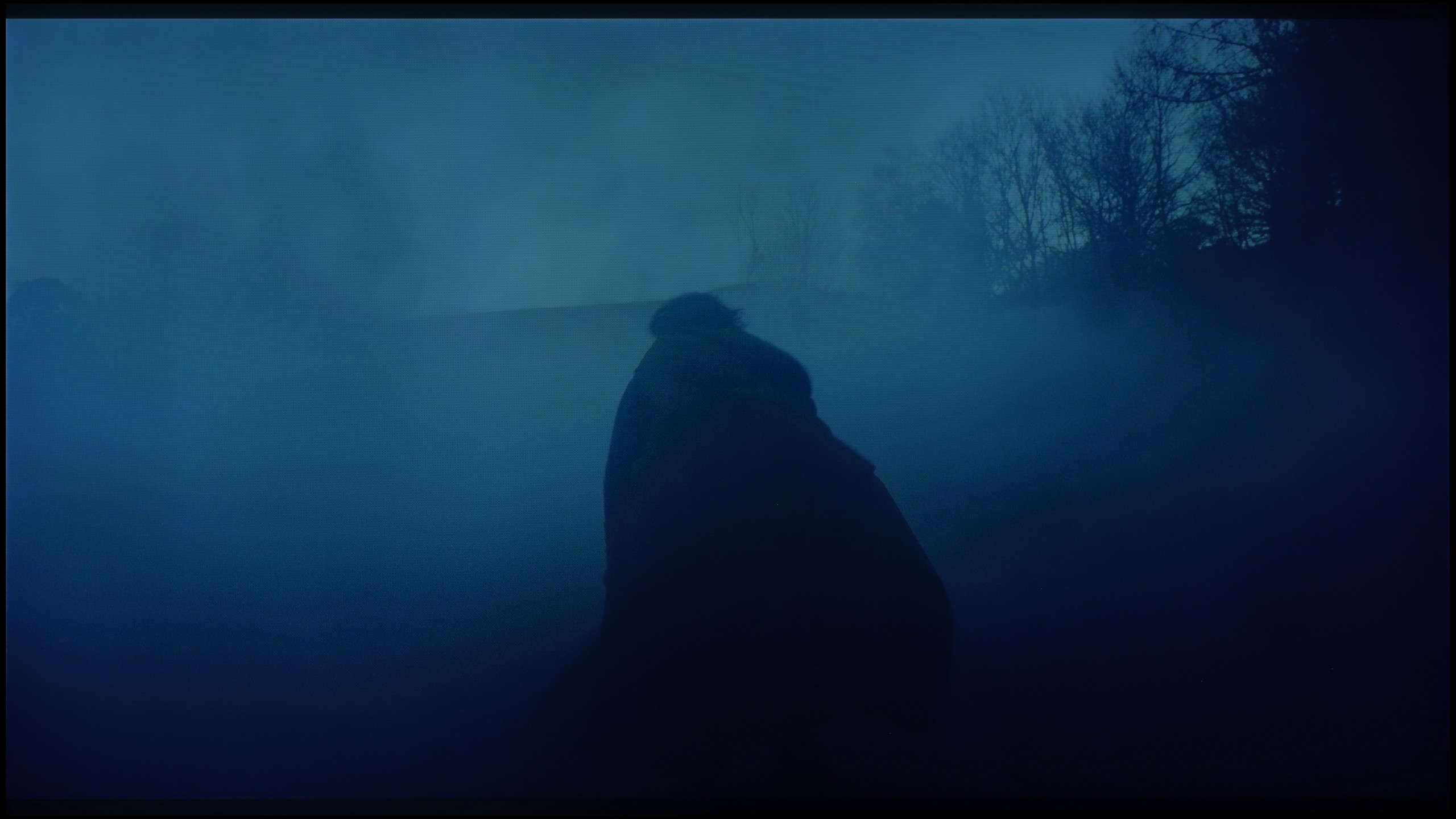

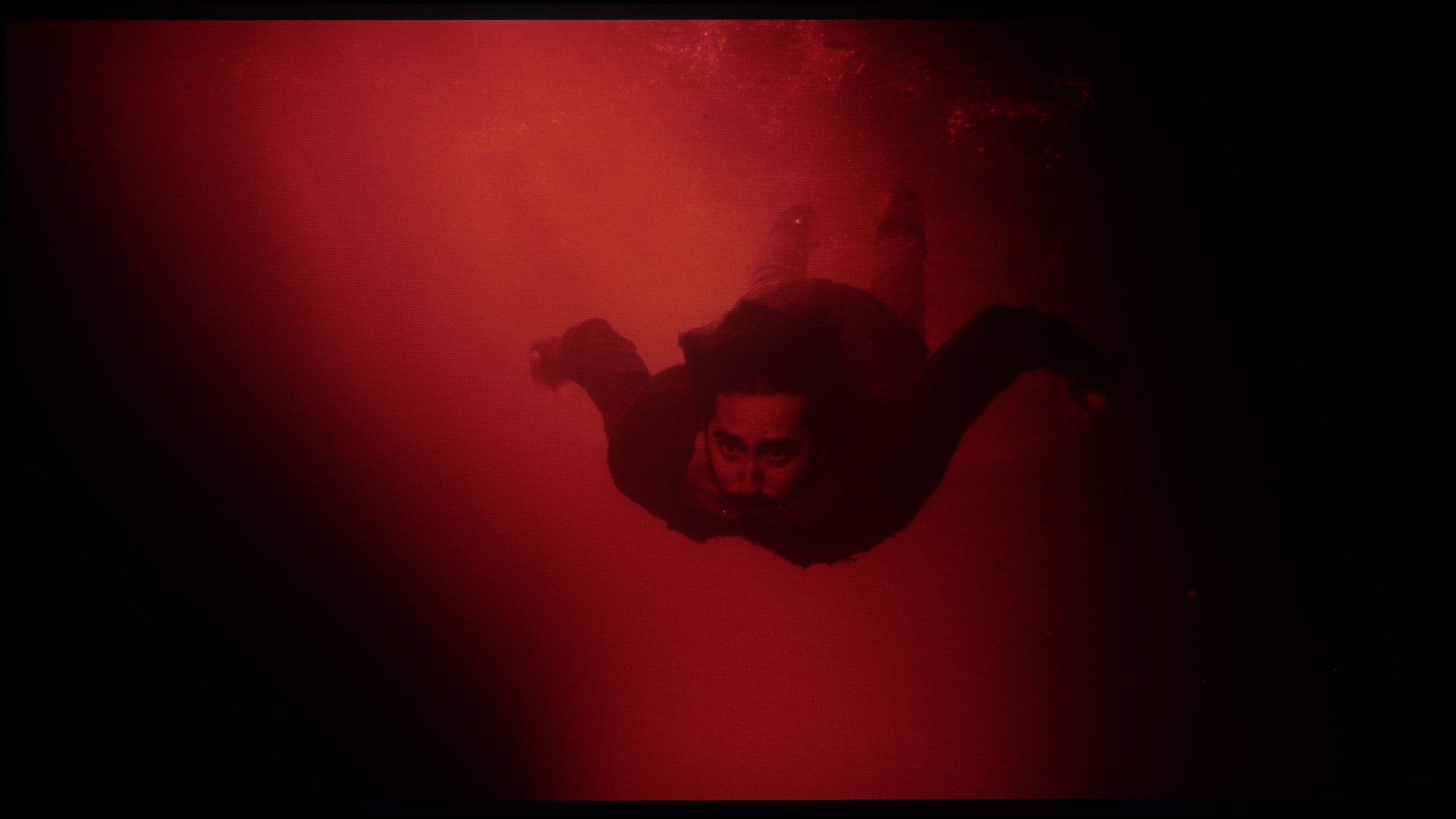




The gradation on LG QNED91T looks very good. There are only slight cutoffs in the brightest scenes, but the television handles blacks very well, providing smooth tonal transitions. As a result, the image is natural and pleasant to the eye, with no visible issues.
In this regard, the QN80F really delivers. Transitions between colours are smooth, nothing tears, and there are no annoying bands in the sky or strange spots in the shadows. Movie scenes in darker tones performed particularly well – and that's where most televisions start to struggle. If you really focus, you might notice slight banding in the brightest areas, but that's really stretching it. In everyday viewing, no one should have a problem with this. To put it simply: the tonal transitions are so good that you can forget about them – and just enjoy the movie.
Image scaling and smoothness of tonal transitions
7.5/10
7/10
Smooth transition function


Image without overscan on the SD signal

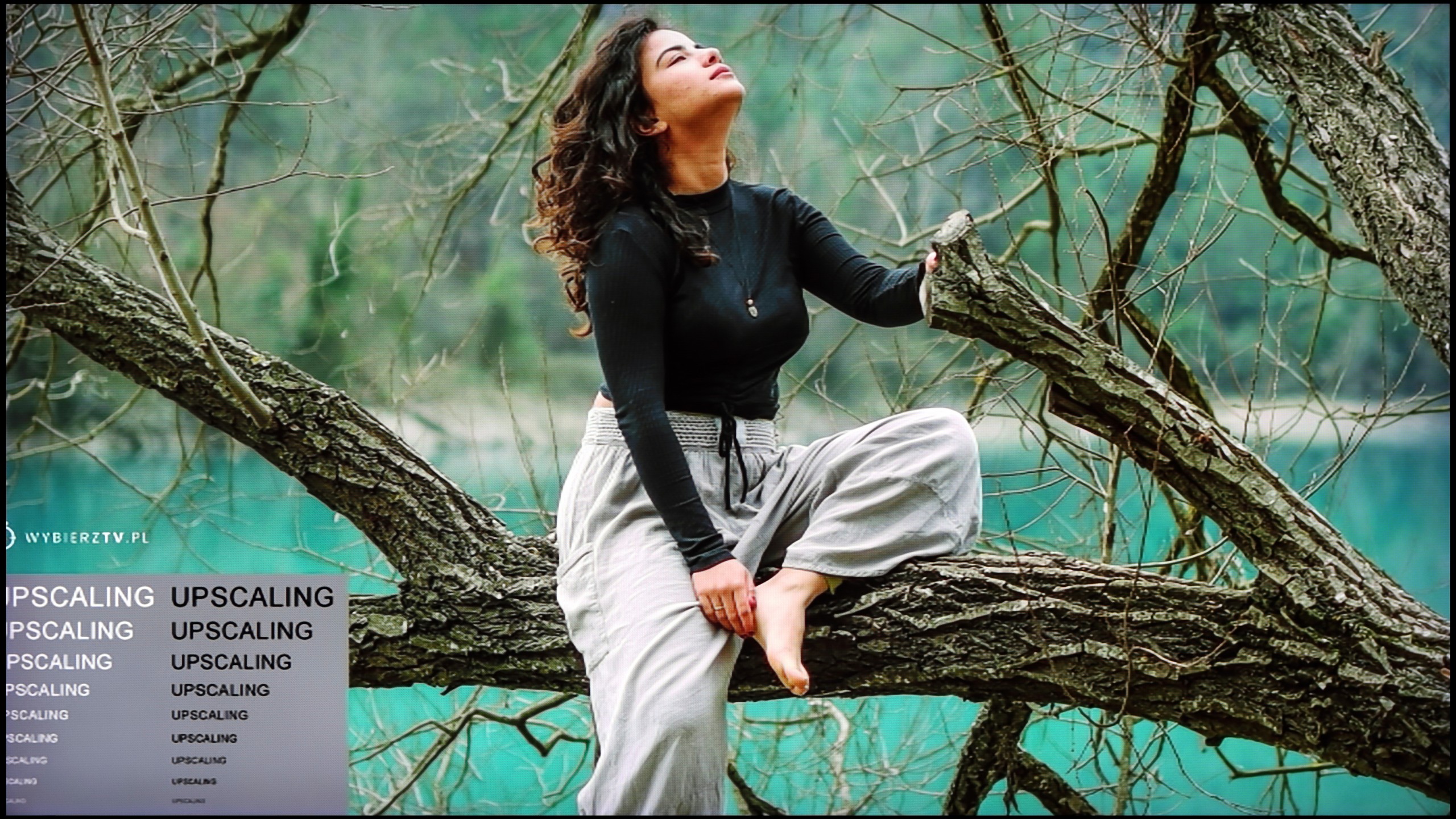
When it comes to tonal transitions in lower quality materials, the television offers a well-known feature from LG TVs - "Smooth Gradation". We can control it at three levels: low, medium, and high. We recommend using the medium option, as it handles tonal transitions well without causing noticeable issues with removing the structure of objects or other artifacts.
On the other hand, when it comes to image scaling (upscaling), LG's Alpha processor performs quite well here. The image appears very smooth, with slight jaggedness in some elements, but this does not significantly affect quality. It looks really good, and the overall effect is very satisfying.
If you notice strange colour transitions or unwanted artefacts while watching lower quality materials – for example from YouTube – it's worth checking the settings and enabling the noise reduction feature. In our opinion, the best setting is at the 'medium' level – it effectively smooths out problematic colour transitions without overly blurring the entire image. However, it's important to know one thing: this option tends to remove film grain. If someone values preserving that effect (e.g., in older films), it's better to simply turn it off – regardless of the level, the grain always disappears.
Regarding resolution scaling (also known as upscaling), Samsung – as usual – performs very well in this area. The QN80F doesn't quite match the top models costing tens of thousands, but for its price class, it performs impressively. Materials of very poor quality (e.g., from SD television or older video files) are noticeably improved and look surprisingly decent. The only noticeable downside is the typical Samsung issue with overscan – which is a slight cropping of the image edges at very low resolutions, such as 576p.
Blur and motion smoothness
7.5/10
7.5/10

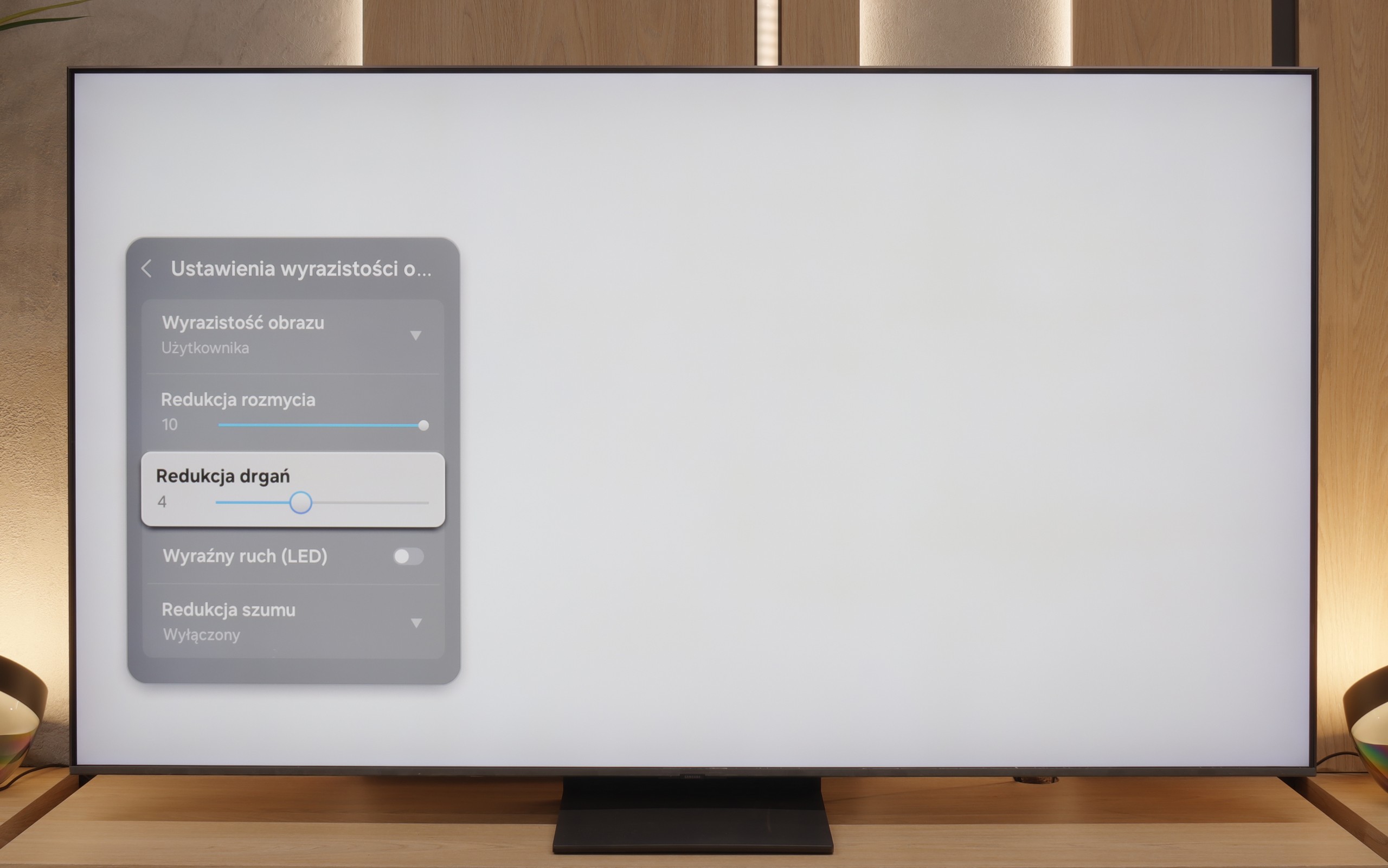
Blur (native resolution, maximum refresh rate):



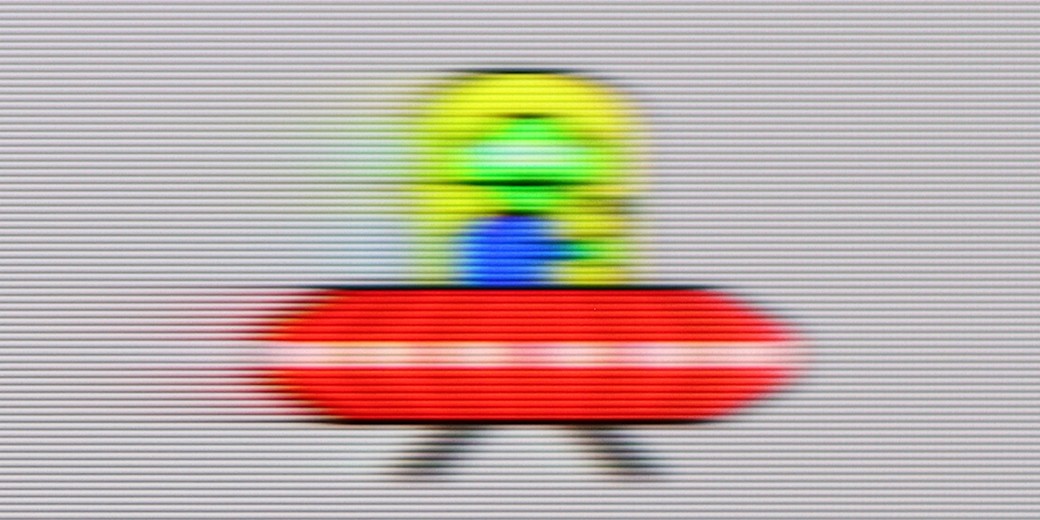
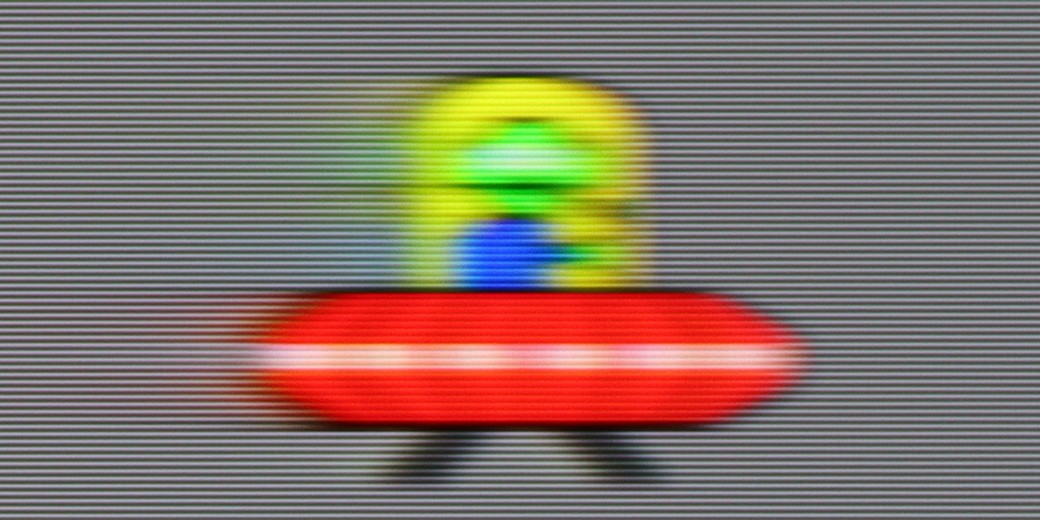
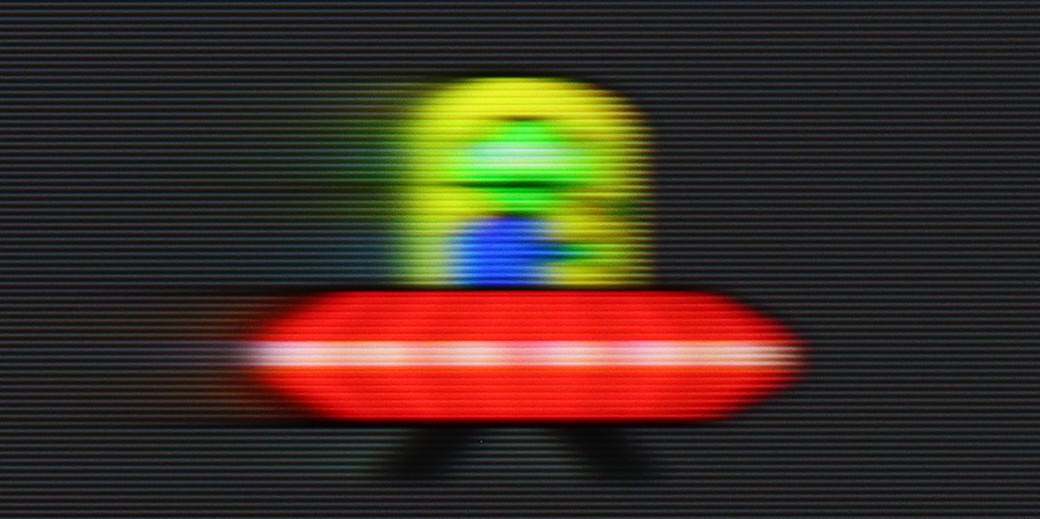
Blur (BFI function enabled):



Image flickers in this mode

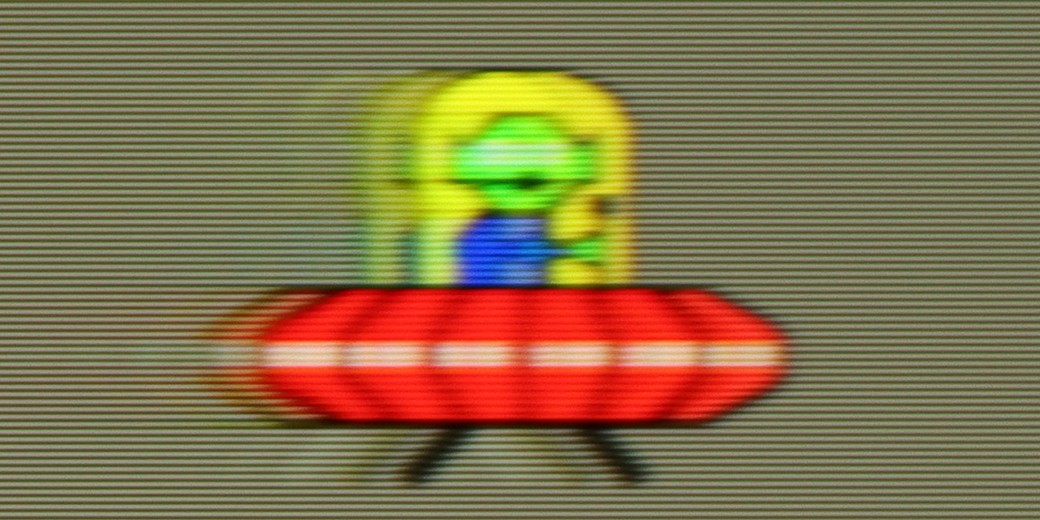
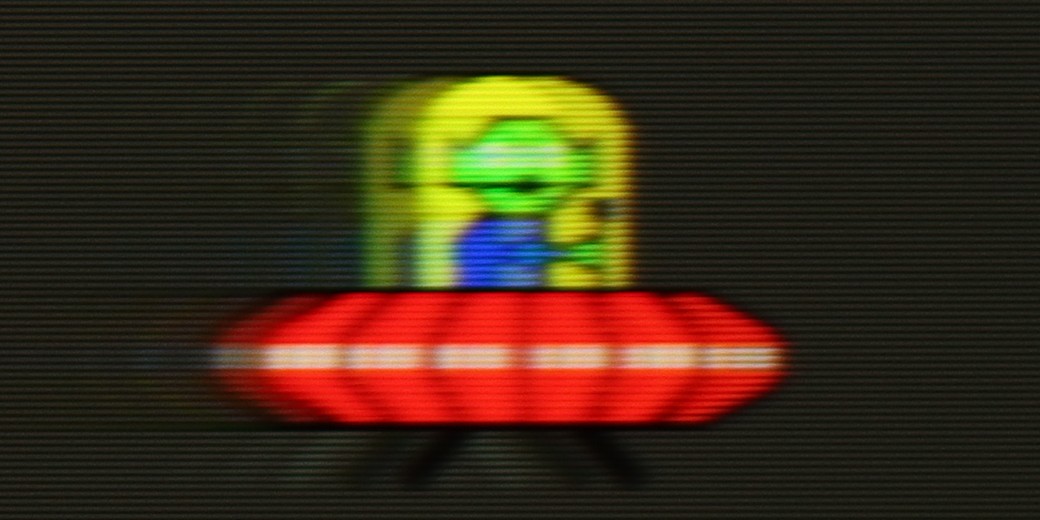
The television has a refresh rate of 120 Hz, which should satisfy most users in terms of motion smoothness. Additionally, QNED91T is equipped with TruMotion technology, which allows for smoother image display in films. With this feature, we can adjust the "De-Judder" and "De-Blur" sliders. The "De-Judder" slider reduces stutter in films, which is particularly useful when playing content with a lower frame rate, while "De-Blur" helps to reduce motion blur in fast scenes, which is important for sports or dynamic shots.
QN80F is truly a “fast” TV. The panel used offers a refresh rate of up to 144 Hz, which in practice means that the screen keeps up with the action – whether we’re watching a movie, playing games, or browsing dynamic content online. The image doesn’t stutter, isn’t overly blurred, and everything simply looks smooth and pleasing to the eye. Of course, the manufacturer hasn’t forgotten about cinema fans – in the settings, we find an option to adjust motion smoothness, allowing us to tailor the effect to our own preferences. You can leave a more “frame-y” look (for those who enjoy the classic film vibe) or crank up the smoothness to a higher level to achieve a theatrical smoothing effect. Importantly, the choice is ours. Watching movies and playing on the QN80F is just plain fun.
Console compatibility and gaming features
9.8/10
8.2/10
- ALLM
- VRR
- VRR range48 - 120Hz48 - 144Hz
- Dolby Vision Game Mode
- Correct implementation of HGIG
- 1080p@120Hz
- 1440p@120Hz
- 4K@120Hz
- Game bar

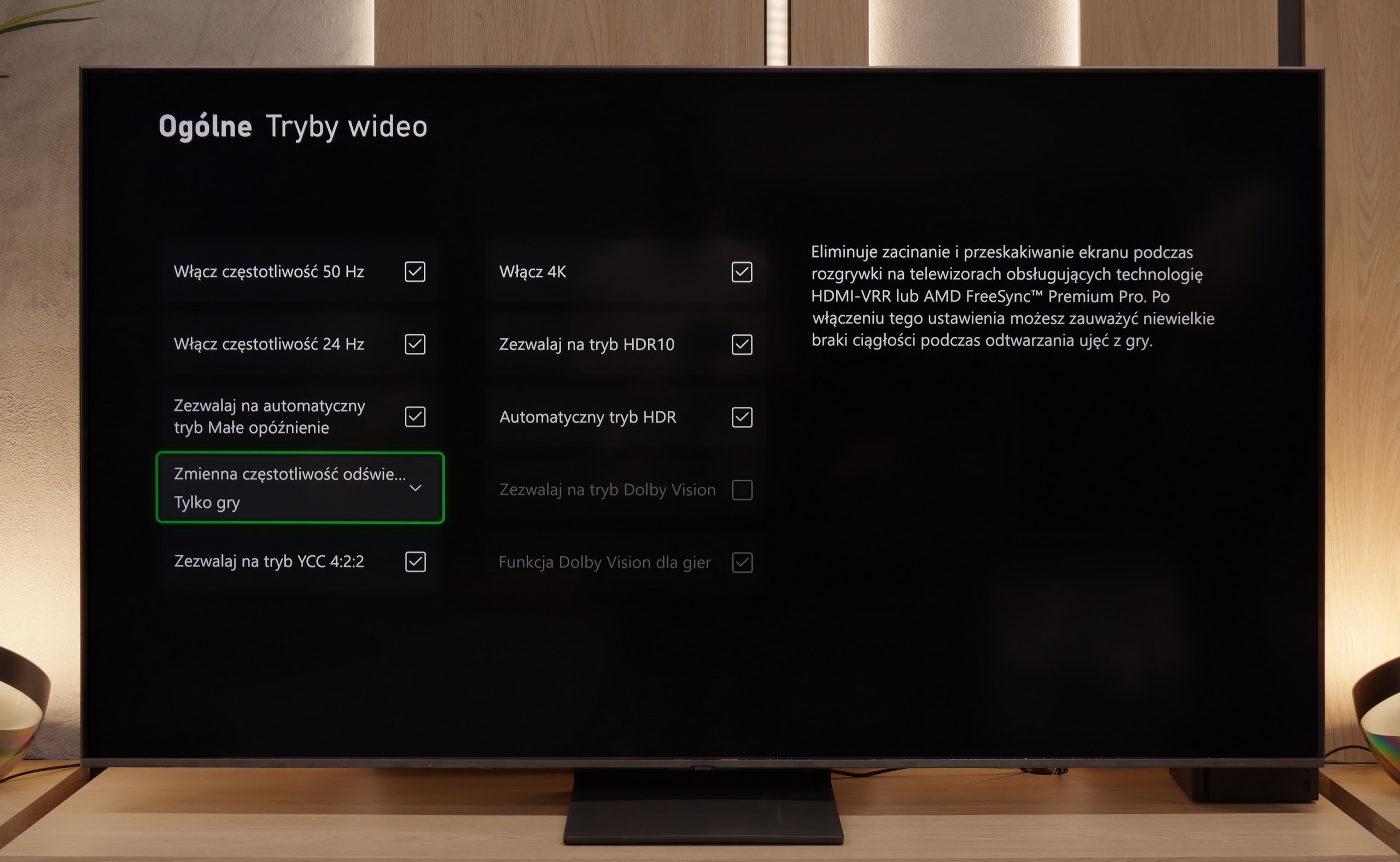



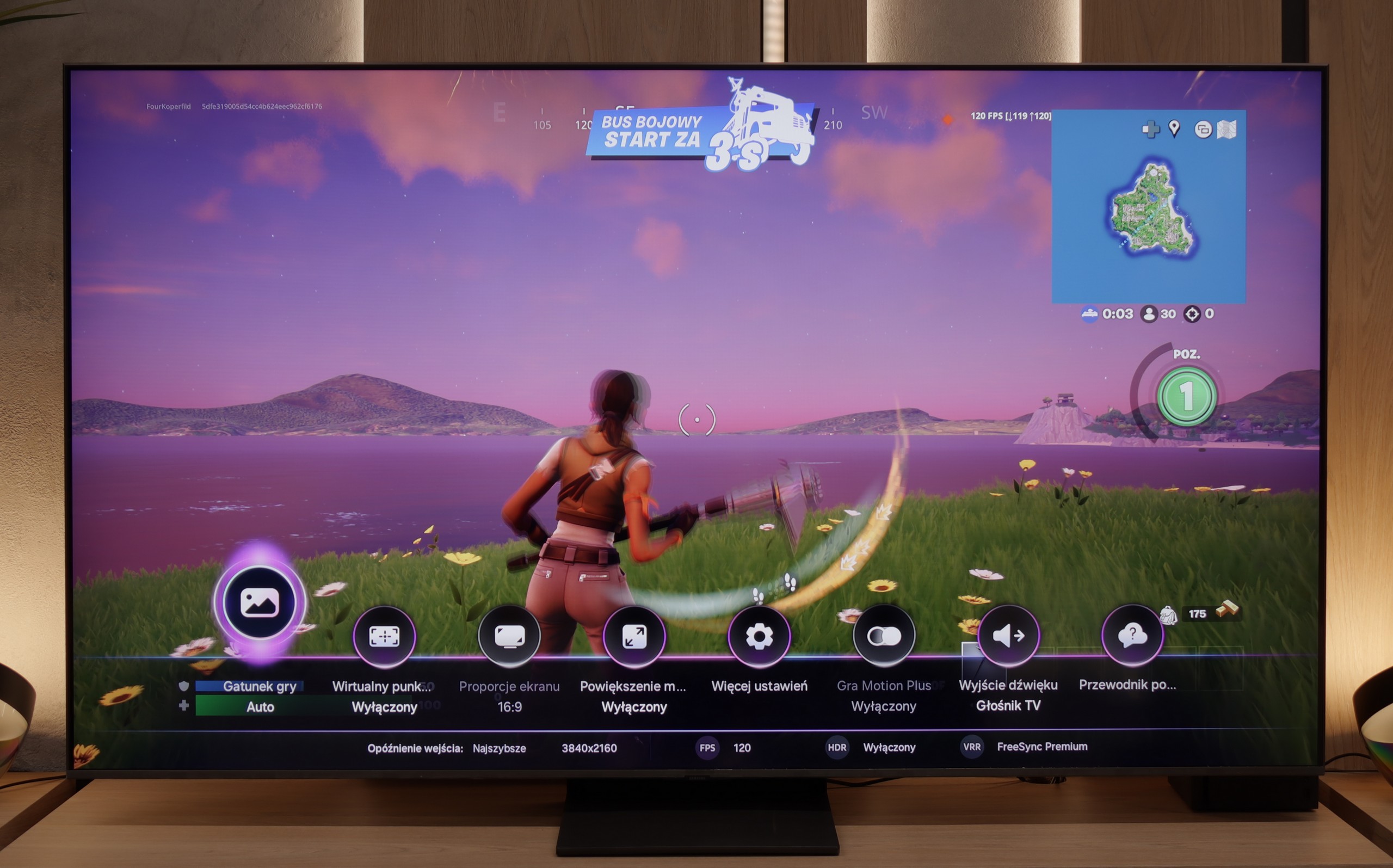

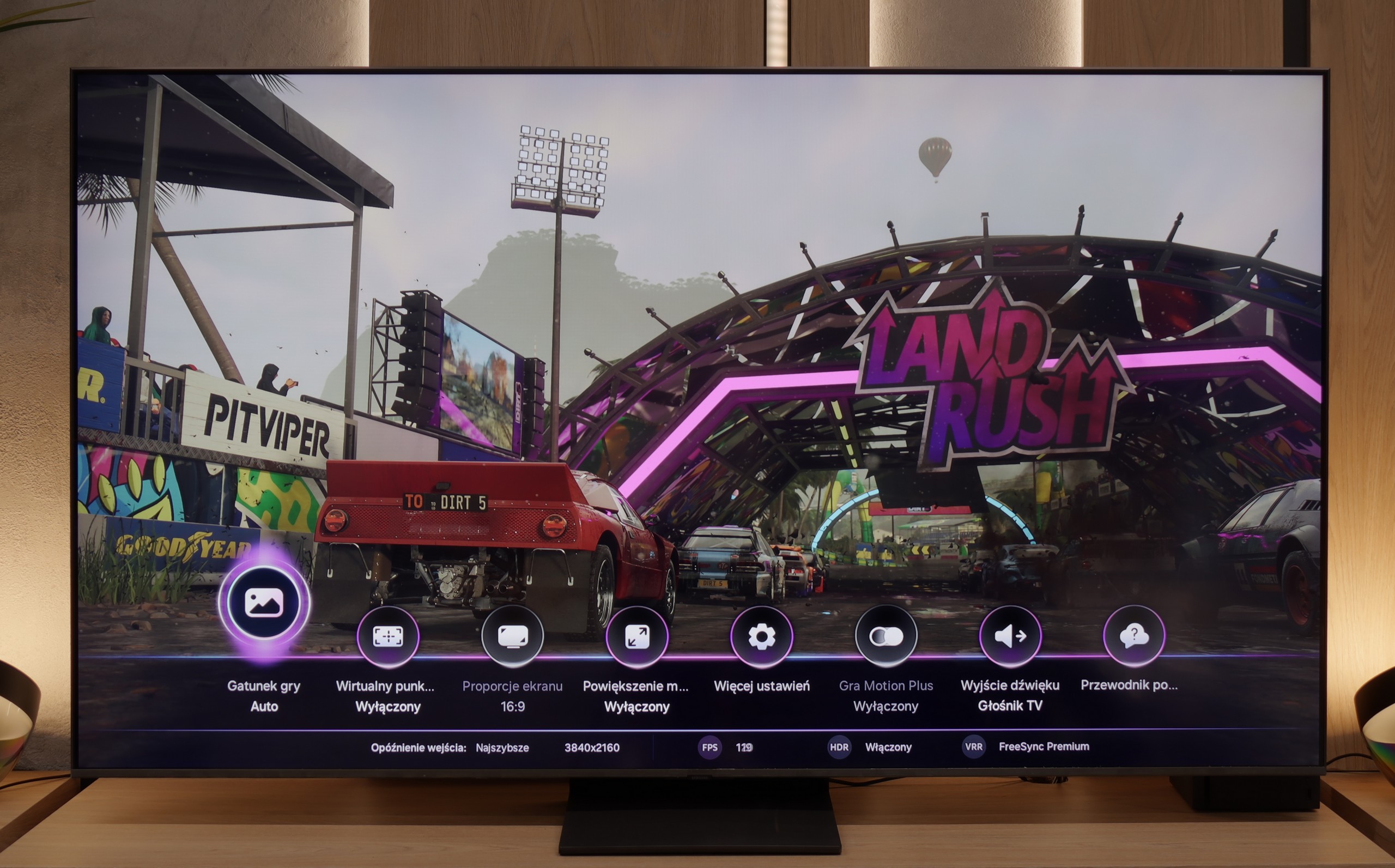
The LG 65QNED91T6A television is equipped with HDMI 2.1 ports with a full bandwidth of 48 Gb/s, providing full support for all the standards needed for gaming on modern consoles. We can count on variable refresh rate (VRR) support and automatic low latency mode (ALLM). This ensures smooth gameplay without delays.
Thanks to support for all popular HDR standards in gaming, such as HGiG and Dolby Vision, we can fully utilise the potential of the PS5 and XBOX One consoles. The television also easily handles lower resolutions than 4K, so even older consoles look good on it. The Game Bar makes it easier to access gaming-related settings, allowing us to quickly and intuitively adjust picture parameters and features for gamers. Additionally, the QNED91T offers NVIDIA GeForce Now functionality, allowing us to play in the cloud without needing a console. However, it's important to keep in mind that this solution is quite costly and somewhat falls behind the Xbox Game Pass, which is available only on Samsung televisions.
QNED91T LG is a great choice for both less experienced and more advanced gamers looking for a versatile television for gaming.
Samsung QN80F is a TV that delivers on almost every front when it comes to gaming. We have a 144 Hz panel, four fully-fledged HDMI 2.1 ports, support for gamers in the form of variable refresh rate (VRR), auto low latency mode (ALLM), and even one of the best-designed game bars on the market. The cherry on top is the motion smoother, which – as the only one in the world – works in games without significantly increasing input lag. Sounds like an almost perfect TV for gamers? And indeed, it’s almost that.
As usual, Samsung does not support Dolby Vision in gaming, but that’s no surprise anymore. However, what is much more surprising is that... the HGIG feature has disappeared – which is a system that allows a console (e.g. PlayStation 5 or Xbox Series X) to precisely match HDR tone mapping to the capabilities of the TV. In the latest firmware update for the 2025 models, this option simply vanished. It looks more like a bug than a deliberate move, but it must be honestly noted that as of the writing of this review, the HGIG feature is simply absent.
And it’s this one missing feature that turns the QN80F from an almost perfect gaming TV into a “nearly” perfect device. It’s a pity – because everything else indicated that Samsung could once again set the bar very high in this generation.
Input lag
9.8/10
9.8/10
SDR
HDR
Dolby Vision
Input lag on QNED91T is really very low, even in Dolby Vision mode. This means we can expect a quick response time, which is very important in fast-paced games, where every millisecond counts. Regardless of whether we are playing in standard mode or HDR, the television offers very good results that will satisfy even the most demanding gamers.
The QN80F doesn't disappoint when it comes to response time. The input lag for 120 Hz content drops below 10 ms, which can be considered an almost perfect result – it's hard to expect more in this class of televisions. Gaming is smooth, responsive, and without delays that could annoy even the most sensitive players. For 60 Hz material, the lag is higher, around 19 ms, but this is a completely natural phenomenon and still falls within comfortable limits.
Compatibility with PC
7.5/10
8.8/10

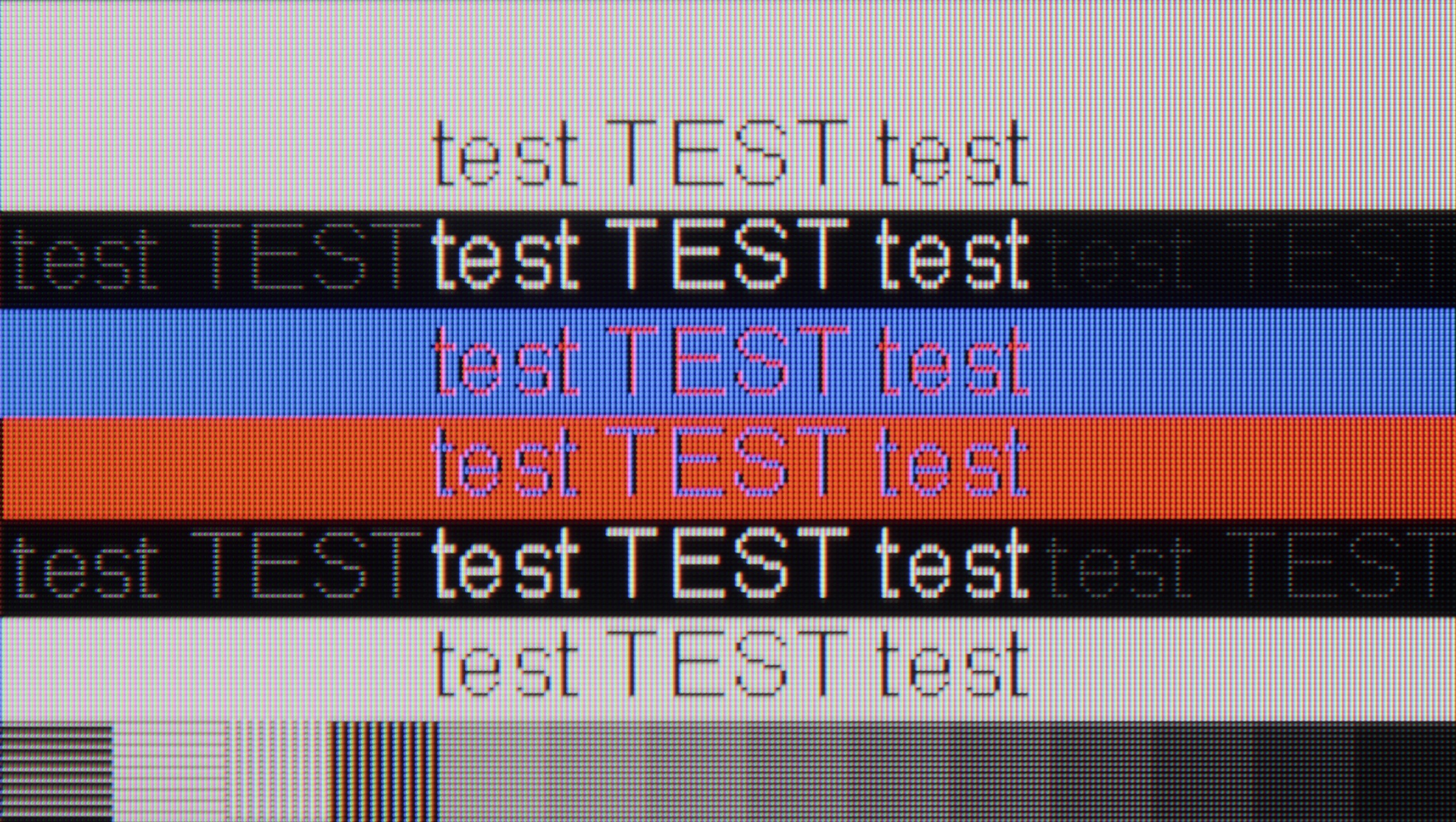
When it comes to gaming on a computer, LG QNED91T synchronises effortlessly with NVIDIA graphics cards and supports G-Sync functionality. The very low input lag makes gaming with a personal computer a real joy. The TV supports chroma 4:4:4, which provides excellent text readability. While we did notice slight blurring of fonts around the edges, overall the image looks very good, and readability is at an acceptable level.
Playing on the QN80F with a computer connected is pure delight. The television works seamlessly with NVIDIA graphics cards (thanks to G-Sync support) and AMD (thanks to FreeSync Premium), and the 144 Hz refresh rate only enhances comfort during fast-paced gaming. Everything works right away, without unnecessary fiddling with settings – just as it should.
When it comes to work, it's very good as well. The readability of fonts is high, and texts look sharp and clear. With very thin horizontal lines, you might notice slight imperfections or shadows, but honestly – you have to take a good look. Unless, like us, you sometimes like to examine the screen with a magnifying glass… then you might spot something 😉.
Viewing angles
3.4/10
3.1/10
As we mentioned in the paragraph about contrast, the television is equipped with a VA panel, which generally offers very good contrast compared to IPS panels. Unfortunately, VA panels have their weakness in the form of limited viewing angles, which is also evident in the case of QNED91T LG. The viewing angles here are not the best, and while the use of an angle-enhancing coating could significantly improve the situation, unfortunately, we don’t have that here. As a result, the picture loses quality when viewed from a greater angle, which can be problematic when more people are watching at the same time.
QN80F, like most TVs with a VA panel, isn't impressive in terms of viewing angles. Just tilt a bit to the side, and you'll notice a significant drop in brightness and lost colour saturation. The image loses its "depth" and "vividness", and darker scenes may appear slightly washed out. However, this is a typical characteristic of VA panels, which offer significantly better native contrast compared to IPS panels in return. In short: you win some, you lose some. If you're sitting directly in front of the screen – there won't be any issues. But when watching together in a larger group, it's worth keeping this in mind.
TV efficiency during daytime
6.1/10
6.6/10

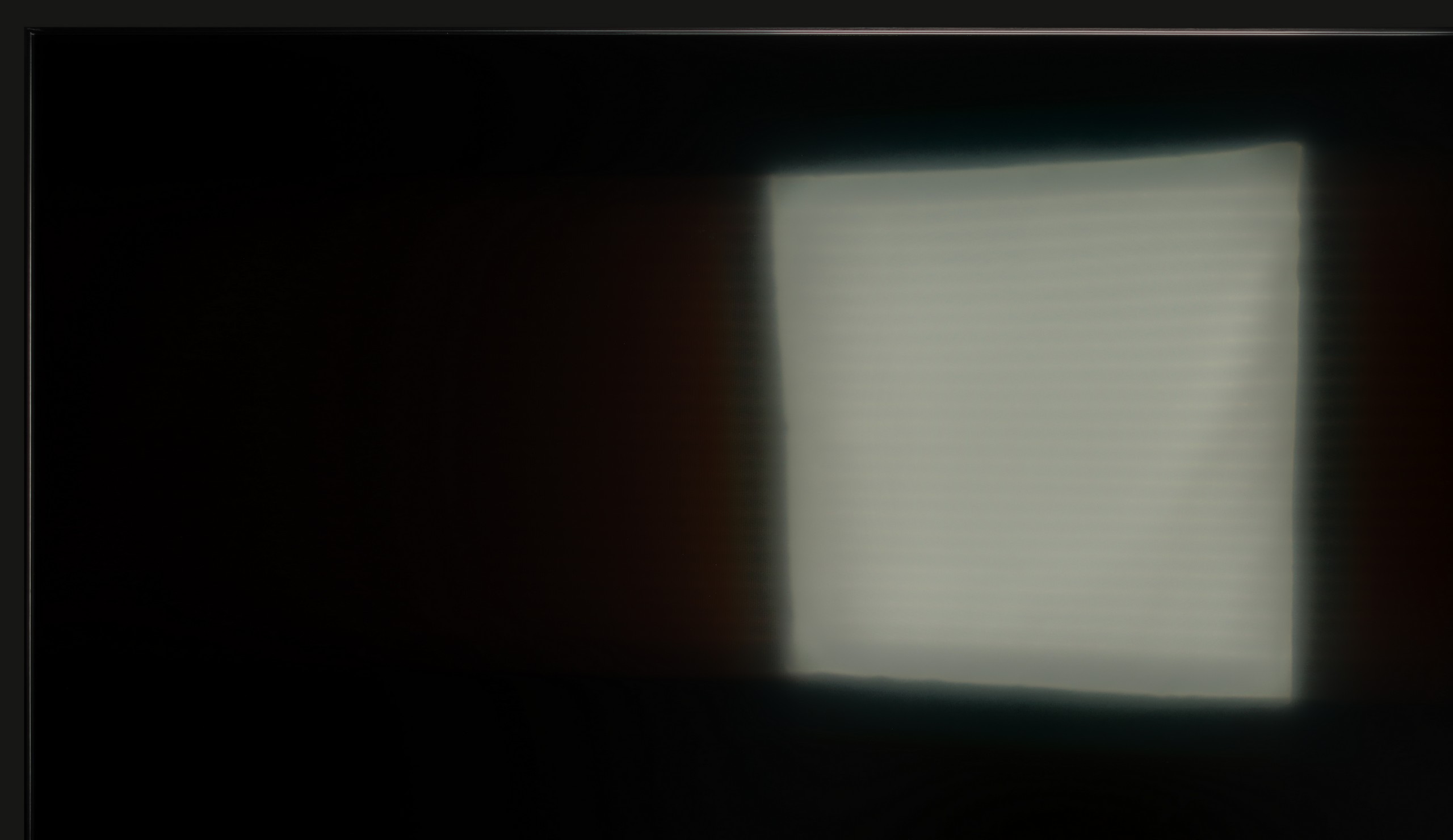

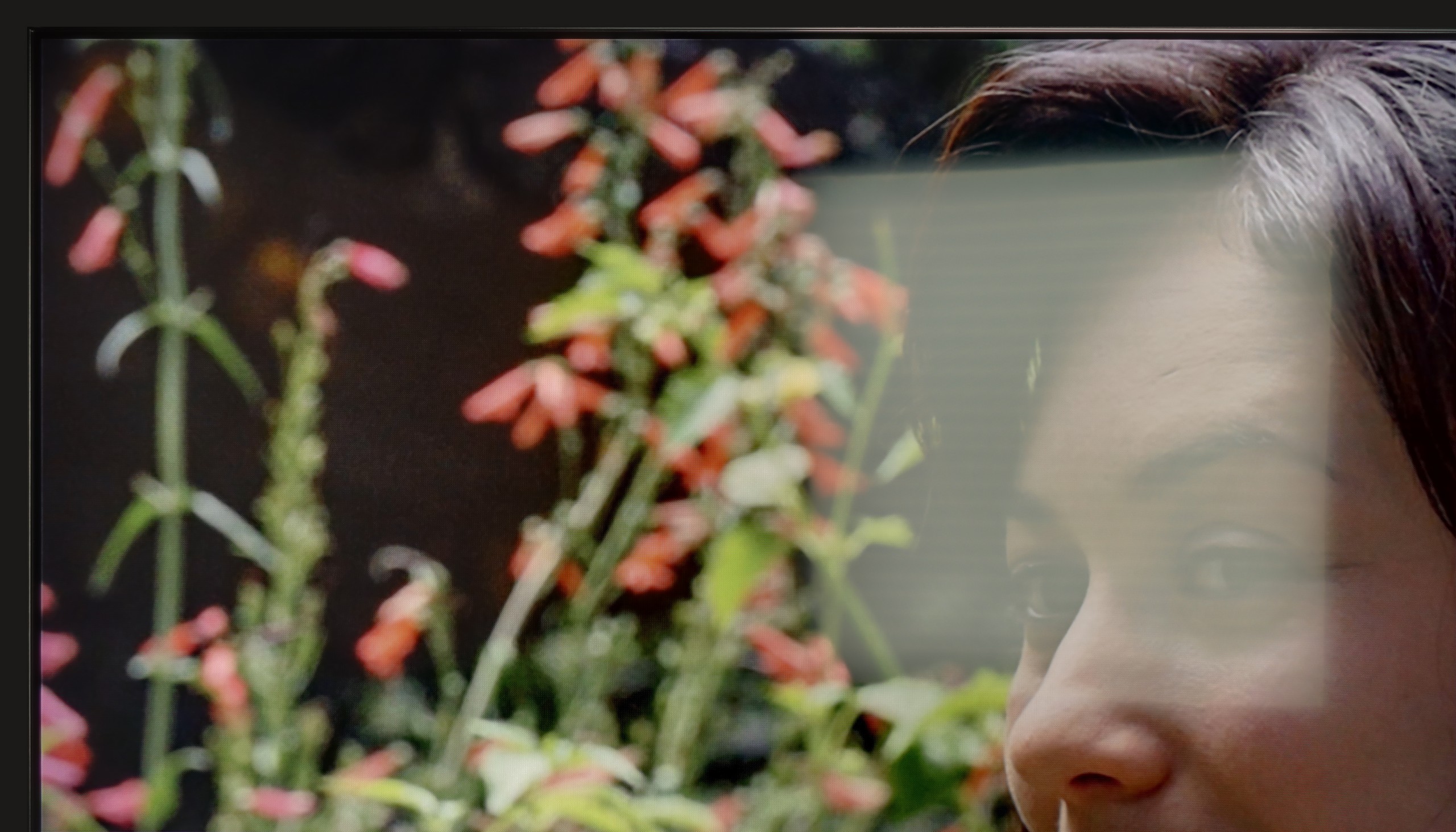
Matrix brightness
Average luminance SDR
SAMSUNG QN80F: 543 cd/m2
LG QNED91T6A: 573 cd/m2
The TV LG 65QNED91T6A is equipped with a satin panel, which handles direct light reflections, such as from lamps or wall sconces, moderately well. In the first test photo with a large lamp, you can see how the reflection "spills across the screen." However, the QNED91T makes up for it in terms of brightness - an average SDR brightness of 580 cd/m² is sufficient for watching television even in more challenging lighting conditions. Because of this, despite issues with reflections, the TV performs well during the day.
QN80F is really a bright television. The average brightness in SDR material is around 550 nits, regardless of the scene, which practically means that you can comfortably watch content even in a well-lit room – and there’s no need to close the blinds every time we turn on a film. The new satin coating on the panel also deserves praise, as it handles glare much better compared to last year's QN80D. Reflections are less bothersome, and the screen maintains readability in various lighting conditions. It’s hard to nitpick here – the QN80F performs simply brilliantly during the day.
Details about the matrix
Subpixel Structure:


Panel uniformity:

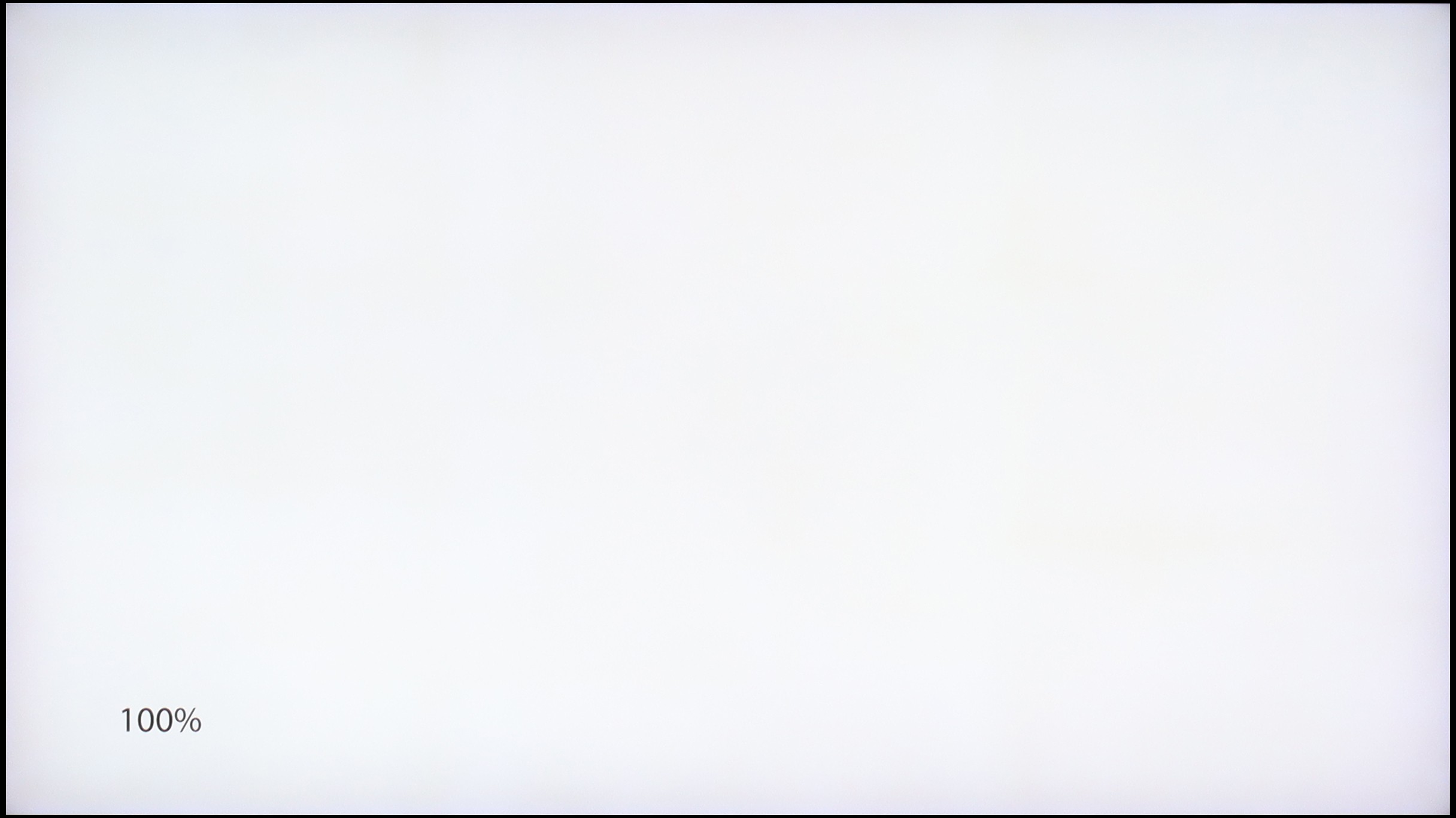
LG QNED91T6A
SAMSUNG QN80F
TV features
9/10
7.7/10
- HDMI inputs0 x HDMI 2.0, 4 x HDMI 2.1 48Gbps0 x HDMI 2.0, 4 x HDMI 2.1 48Gbps
- OutputsToslink (Optical audio), eARC (HDMI), ARC (HDMI)Toslink (Optical audio), eARC (HDMI), ARC (HDMI)
- Network InterfacesWi-Fi 2.4GHz, Wi-Fi 5GHz, Ethernet (LAN) 100MbpsWi-Fi 2.4GHz, Wi-Fi 5GHz, Ethernet (LAN) 100Mbps
- TV receptionDVB-T, DVB-T2, DVB-S, DVB-S2, DVB-CDVB-T, DVB-T2, DVB-S, DVB-S2, DVB-C
Classic features:
- Recording to USB (terrestrial TV)
- Recording programming
- Picture in Picture (PiP)
- RF remote control (no need to aim at the screen)
- Backlit remote control
- Teletext
- Audio only mode
- Possibility to connect Bluetooth headphones to the TV
- Possibility to simultaneously use Bluetooth headphones and the TV speaker
Smart features:
- AirPlay
- Screen mirroring (Windows Miracast)
- Wyszukiwanie głosowe
- Voice search in native language
- Ability to connect a keyboard and mouse


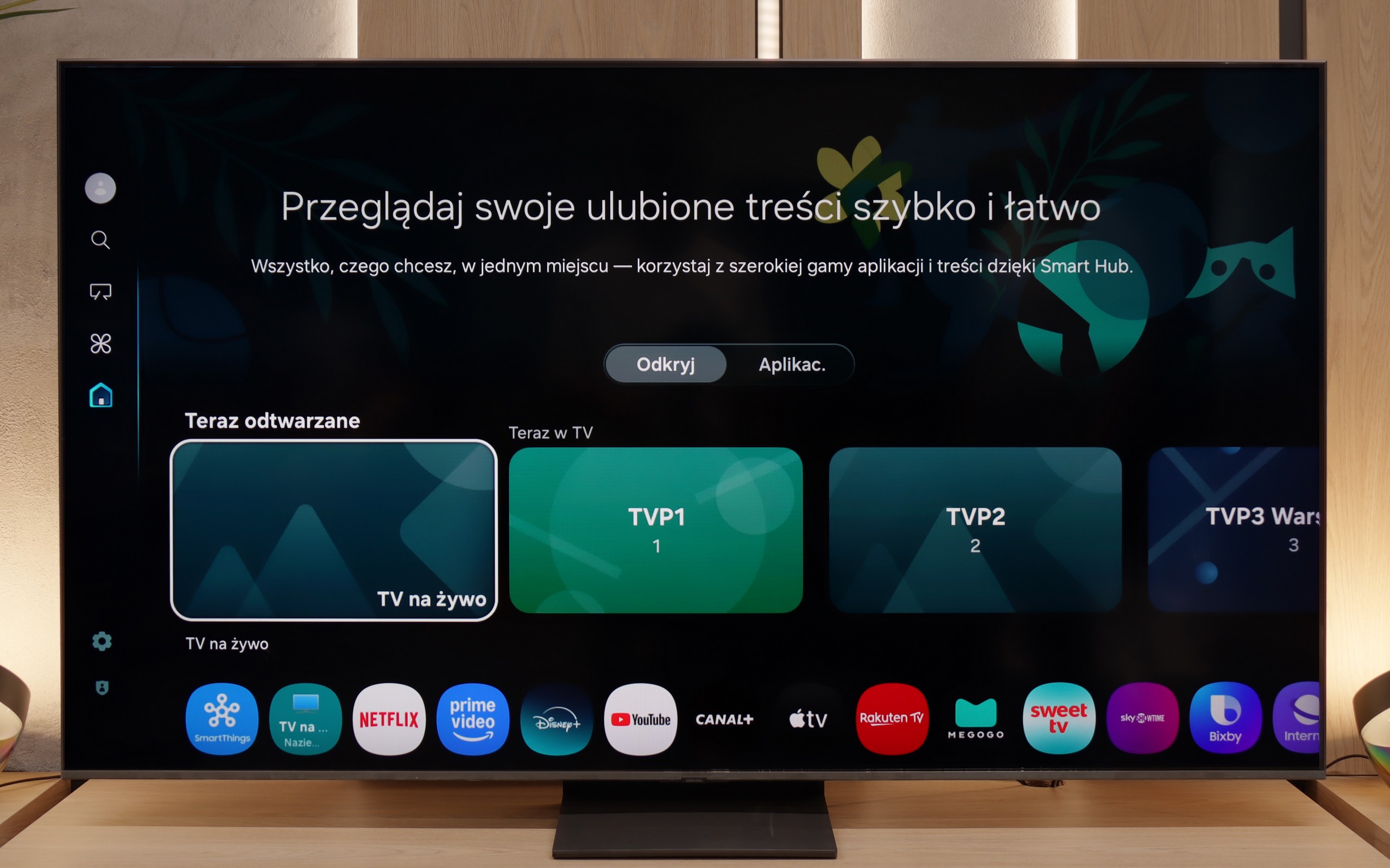
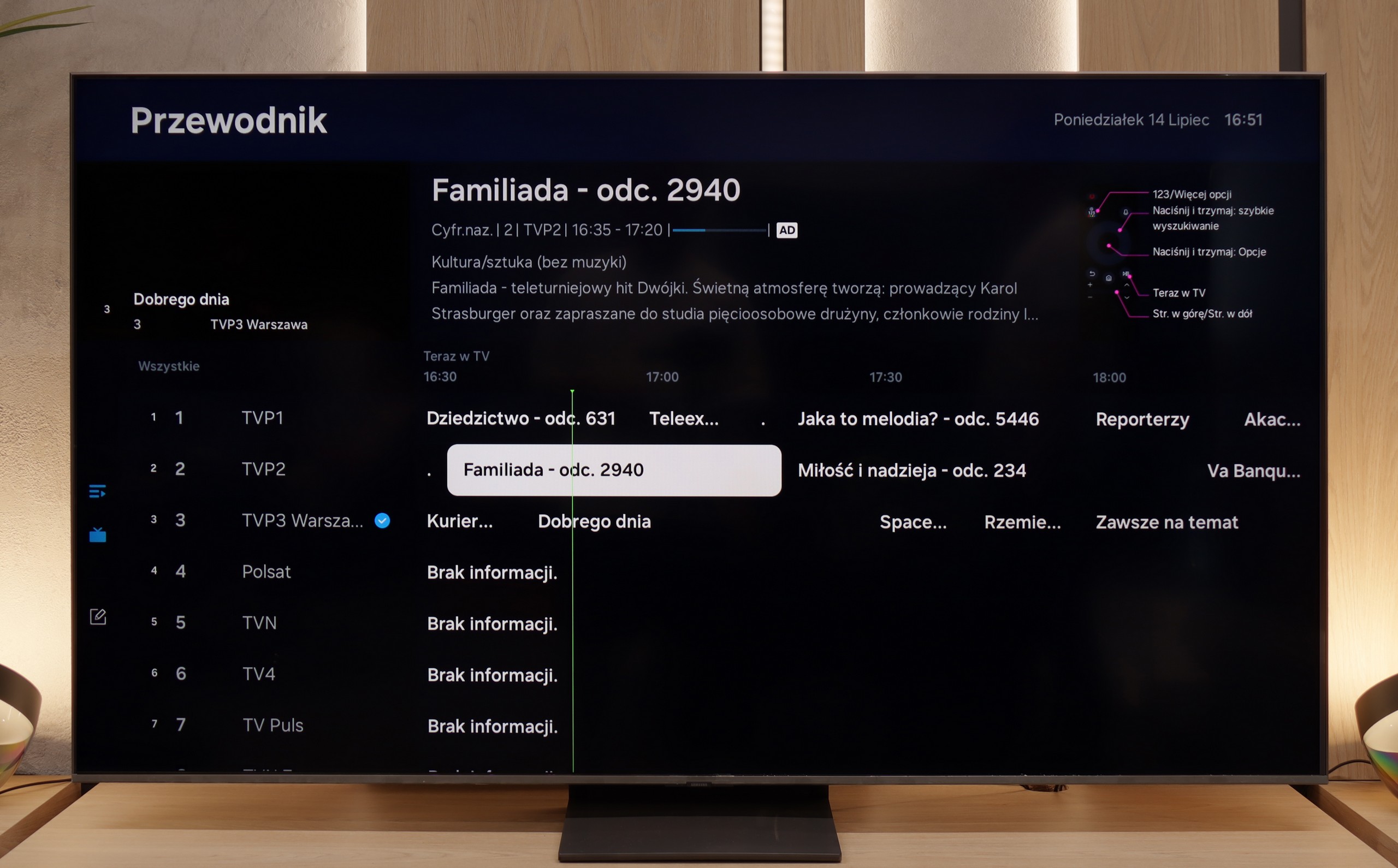
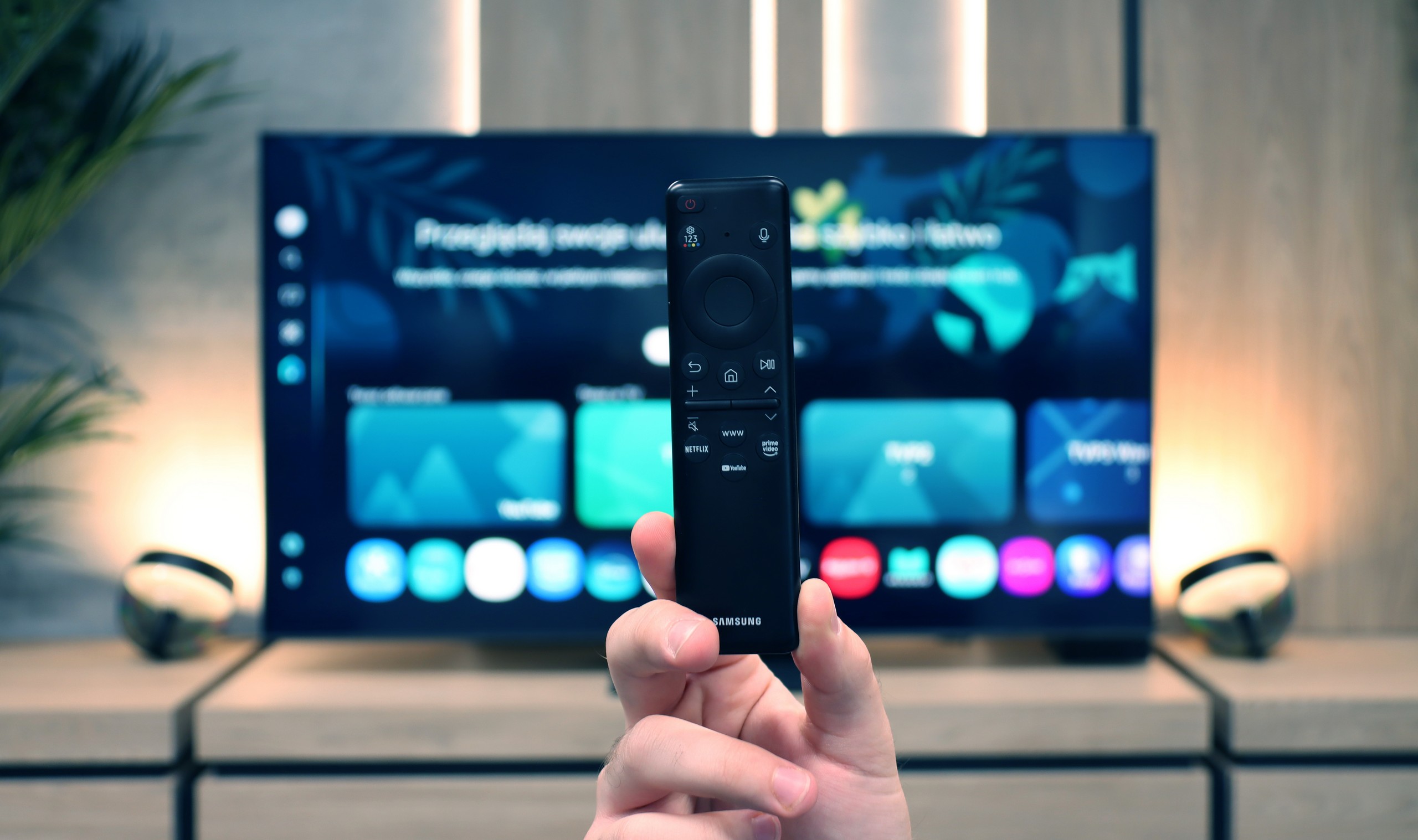
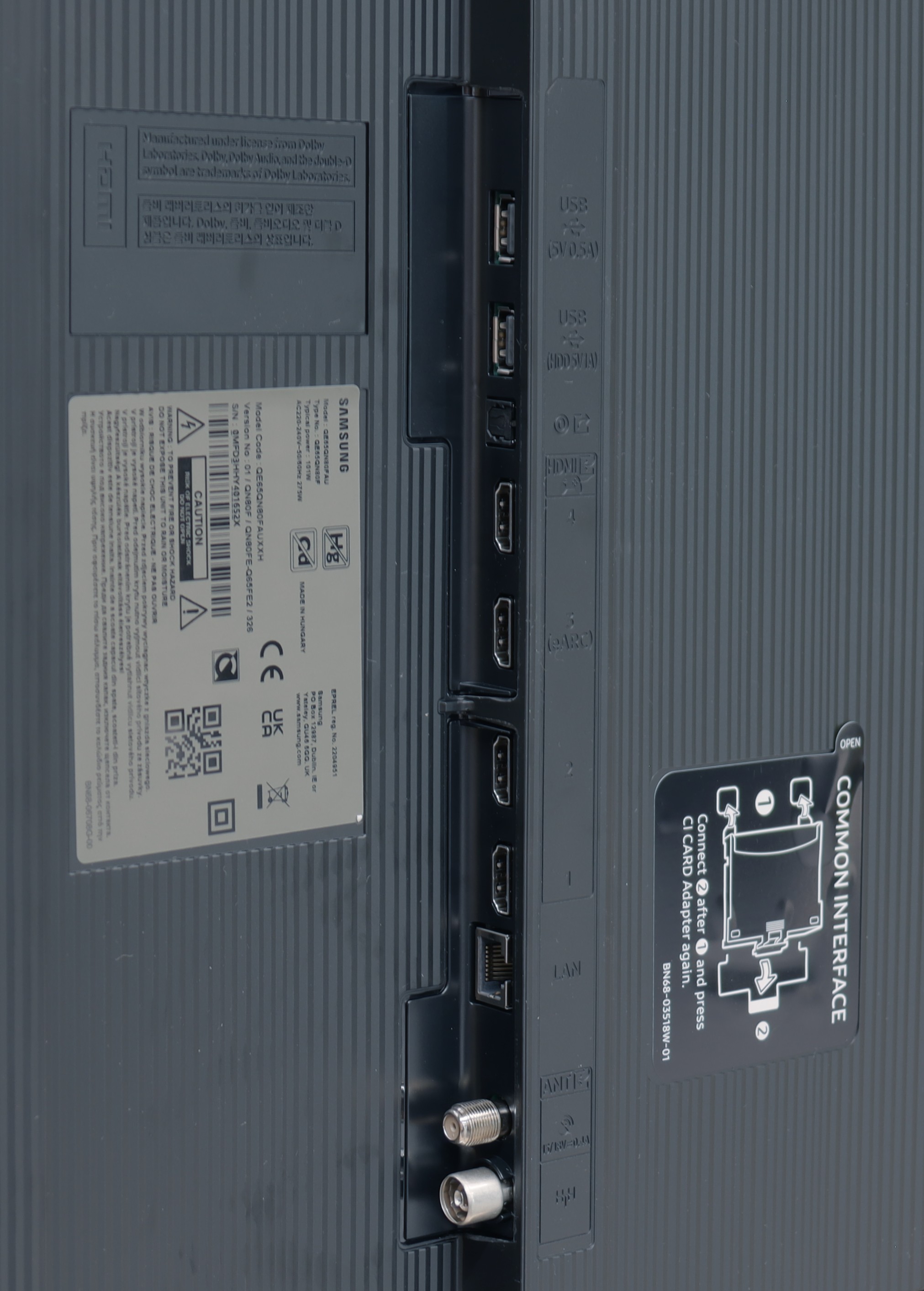
The most important thing in today's televisions, apart from picture quality, is the operating system. The one available in LG models is really very good. Of course, we're talking about the WebOS system, which offers most of the popular apps available in Poland, much like GoogleTV. What sets this system apart is primarily the excellent remote control with an accelerometer - the Magic Remote, which resembles a magic wand. Controlling with this remote is incredibly convenient. Additionally, the television offers a very good voice assistant that understands Polish perfectly.
In terms of user features, the television offers practically everything one could wish for. Here we find the ability to record programs from built-in tuners, support for AirPlay to connect an iPhone, and a mirroring function. We can easily connect keyboards, mice, or headphones, although keyboards are not essential thanks to the handy Magic Remote. Unfortunately, the PiP (Picture-in-Picture) feature is missing here, but it's such a specific function that only those who really need it will feel its absence. The QNED91T is a television that does not disappoint when it comes to daily enjoyment of its use.
SmartTV QN80F: Tizen
When it comes to smart features, the QN80F has nothing to be ashamed of. On the contrary – Tizen is one of the richest operating systems in terms of functionality. We have voice search, AirPlay support, Miracast and all the major streaming platforms at our fingertips. But Samsung's real advantage reveals itself in the smart home – SmartThings. Not only can you sync light bulbs and vacuum robots, but you can also integrate devices from other manufacturers, thanks to support for the Matter standard. And suddenly it turns out that the QN80F can serve as a home command centre. There is just one "but" – Tizen is a closed system, so we might not find a few lesser-known apps. However, in practice, it still has everything that 99% of users need.
Classic TV features:
When it comes to classic features, it’s just as good – well, almost. The QN80F supports Picture-in-Picture, a rare but still useful PiP feature. We'll easily find EPG, the good old teletext (yes, it works!) and the ability to connect external devices via Bluetooth – whether it's headphones or a soundbar. Unfortunately, it lacks the option to record to USB from the built-in tuners. This is a small annoyance, especially since competitors in a similar price range are increasingly offering this feature. It may not be a must-have function, but since everything else works so well, it’s a shame it's missing that finishing touch.
Playing files from USB
8.5/10
9/10
Supported photo formats:
Maximum photo resolution:

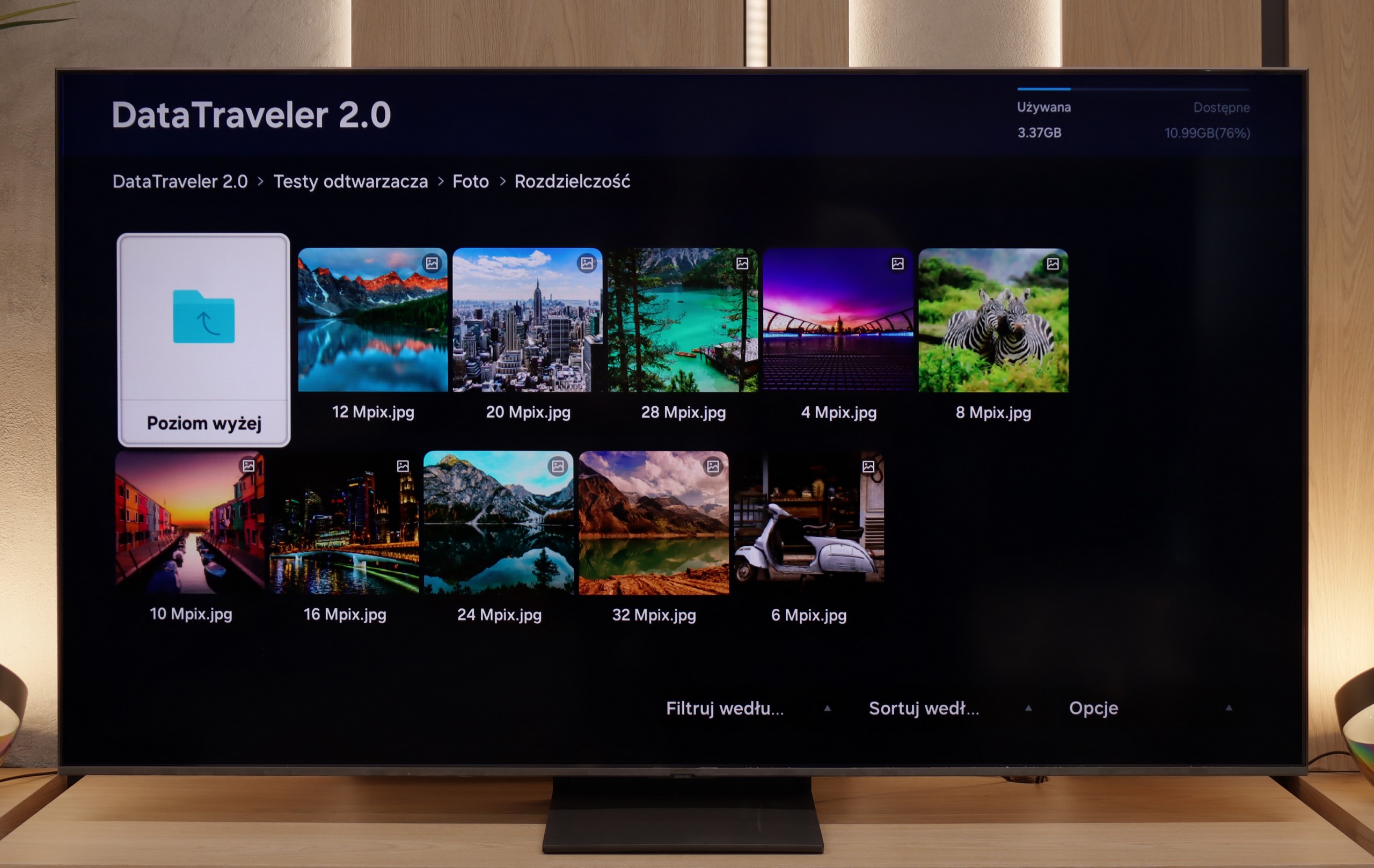
The built-in player in QNED91T should satisfy most users. It handles Polish characters without issue and plays movies with subtitles from external drives. The player also manages most audio formats and photos, except for Apple HEIC files.
The built-in media player in the QN80F handles most popular video formats – from classic MP4 to more demanding containers. It may not be as versatile as VLC, but for home use, it’s more than sufficient. The situation is worse with photos – here, unfortunately, it’s quite limited. Support mainly includes the JPG format, but hey, at least that’s the most important one 👌. During our tests, there was also a minor issue with subtitles. The QN80F only handled the simple text format .txt – unfortunately, other, more advanced formats (like .srt or .sub) were not recognized.
Apps
8.3/10
8.7/10














































Sound
6.9/10
6.7/10
- Subjective sound quality:6.9/106.7/10
- Dolby Digital Plus 7.1:
- Dolby True HD 7.1:
- Dolby Atmos in Dolby Digital Plus (JOC):
- Dolby Atmos in Dolby True HD:
- DTS:X in DTS-HD MA:
- DTS-HD Master Audio:
LG QNED91T comes with a set of 4 speakers in a 2.2 configuration with a total power of 40W. The TV sounds quite pleasant, and the subtle bass is noticeable. Of course, it's not on the level of an external audio system, such as a soundbar or home theatre, but it's sufficient for everyday use. It's also worth praising the support for audio formats DTS:X and Dolby Atmos, which significantly enhance the audio experience.
For a TV of this class, the QN80F sounds surprisingly good. It supports the Dolby Atmos format, which is worth noting as this is still not obvious in many models in this range. Unlike the thinner QN70F, here you can even feel a slight bass – all thanks to the thicker casing, which simply provides more space for the sound to "breathe". It's perfectly adequate for everyday viewing and series, and with the right settings, you could even consider listening to music without the need to connect external equipment. But – as is the case with Samsung, there is unfortunately a lack of support for the DTS:X format, so if we are using audio devices that support this format, we will first need to connect them to the amplifier and only then to the TV.


